






Young calf Vee made a useful pillow for these three girls relaxing a er a hard day showing at the Shepparton Show. Maggie, Britney and Penny Gavenlock, from Tallygaroopna, are the daughters of Brad and Jess Gavenlock, who are well known in show circles. Britney took Vee into the ring of the youth show and came out with a ribbon.

Proudly proven on pasture-based farming operations, the T8500 is a reliable, robust rotary milking system that can be operated with just one milker.
Whether you’re looking to increase cow throughput, reduce labour or gain individual cow data, the T8500 is a hardworking and reliable rotary that won’t let you down - now and in the future.
Contact your local dealer today for an on-farm consultation.















































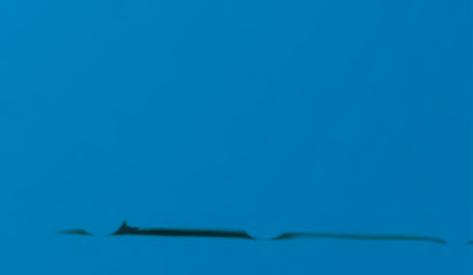




BY ELIZA REDFERN
CHALLENGES CONTINUE to plague global dairy export markets which, while not new, can be of particular concern during the Southern Hemisphere peak producing months.
On the other side of the world, however, production and supply chain constraints are helping support export returns and creating opportunities for Australian dairy.
In the Northern Hemisphere, key dairy exporting regions have faced warm summer temperatures, while also dealing with disease outbreaks. Avian influenza continues to impact production in the US (in addition to a smaller national herd), with milk flows having tracked below the previous year for the past 14 consecutive months.
In Europe, the bluetongue virus is beginning to have a similar impact, however the market is still waiting for visibility on the
region’s production data.
In both instances, robust local demand has also drawn focus, with subsequently less milk (and solids) available for export adding substantial value to product pricing.
In the lead-up to New Zealand’s season shoulder, milk production tracked well above last year in July (+8.2 per cent on a litres basis, and off a low base) and August (+9.0 per cent). Favourable weather conditions and earlier calving have helped support milk flows during the country’s lower producing months.
Nonetheless, there have been significant price increases on the GlobalDairyTrade (GDT) platform: volumes offered on the platform have tightened in some categories (a result of product mix changes) and demand for near term deliveries has risen.
Australian dairy products.
Shipping challenges along key trade routes have already diverted some demand towards Oceania dairy this year, but elevated Northern Hemisphere pricing has exacerbated the trend. As such, additional inquires for Australian dairy have been surfacing from buyers across South East Asia and the Middle East, and purchasing activity from Chinese buyers has been more active, especially during August and September GDT events.
China remains a price sensitive market, however, with persistent milk powder stockpiles, relatively strong (if slowing) milk production and a fragile economy that continues to weigh on local dairy consumption.
several southern regions remain dry, weighing on milk availability in parts of the export focused states.
Additionally, after historically high volumes of overseas dairy were imported over the past two seasons, regaining market share domestically is a priority for many manufacturers. As such, several Australian exporters are well sold in some product categories, further supporting export returns.
After the past two years of a challenging market environment, Australia’s improved competitiveness (domestically and internationally) and increased milk flows have allowed exporters to capitalise on new opportunities. However, the global market continues to present economic constraints, with permanent reprieve still quite a way down the road.
Inflation continues to limit importing activity and buyers are increasingly looking towards more competitive New Zealand and
Improved demand for Australian exports has been well timed considering milk production continues to grow modestly in the lead-up to spring. In July and August, national milk flows were +1.6 per cent and +2.8 per cent year-on-year, however
Indicative Australian export prices
Indicative Australian export prices
In the meantime, the Australian dairy industry can take advantage of the short-term improvement in export conditions, while rebuilding domestically too.


















BY RICK BAYNE
THEY SAY that everything is bigger in the United States and World Dairy Expo lives up to that reputation.
It’s like Australia’s International Dairy Week but on steroids.
The expo is based around an arena with a 10,000-seating capacity where the cattle are paraded and judged. Even Elvis played there back in the 1970s.
The total site in Madison, Wisconsin, covers 68 hectares, probably bigger than some family farms in the US.
The week-long event usually welcomes more than 50,000 attendees. Last year, people came from more than 100 countries, led by Canada, Mexico, Brazil and Great Britain.
Australia is not normally in the top five visiting countries but “we always get a few”, according to WDE communications specialist Jenna Langrehr.
Jenna is one of 10 full-time expo staff, and is supported by four interns to cope with the influx of national and international media and to produce multiple media releases, social media updates and a daily printed newspaper during the event.
She’s not surprised by the ongoing strength of the expo.
“Our slogan is that we are the meeting place of the global dairy industry and it’s all based around the people. People like meeting other people who love cows,” she said.
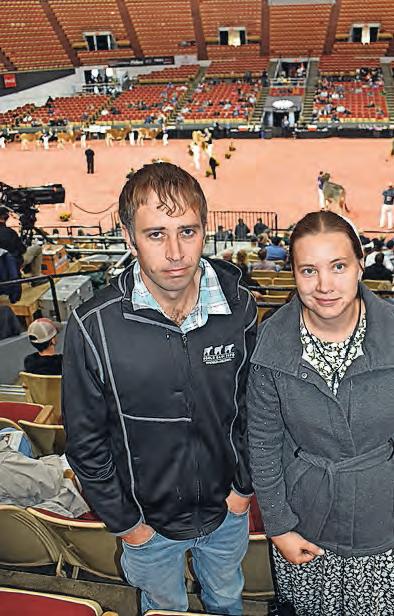
“We have something for everyone, whether you’re here for the showing part of it, the technology part or just love seeing good cows and dairy products.”
The arena was built the year after World Dairy Expo started in 1967 and the overall site continues to grow to cater for the expanding event.
This year there were more than 3000 head of cattle on site and more than 500 vendors, along with a lengthy waiting list.
The pavilions are huge. The exhibition hall that houses most of the trade displays has a capacity of 4500 people.
You can barely see from one end to the other of the cattle shelters, though the ubiquitous American flag can be spotted at either end.
WDE has helped to invest in some of the buildings on the campus.
“We were overflowing at the seams,” Jenna said.
An economic impact number is compiled after the show and shows that it typically generates about $33 million for Dane County.
This year followed a Golden Age theme.
“Each year we think of something that would be fun and could translate to different countries and cover different aspect of the show,” Jenna said.
“On the dairy cattle side of things, we like talking about the glitz and glamour of it. It has an old-school Hollywood feel to it, but it also links to this current golden age of technology and research that’s happening.”
Wisconsin calls itself America’s Dairyland
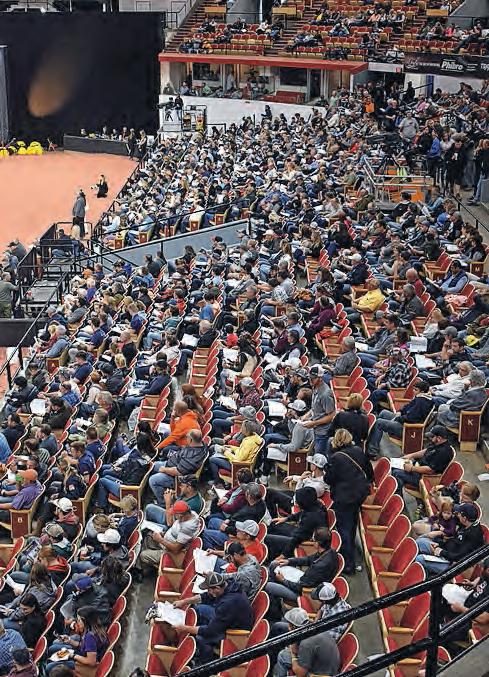





and the industry remains strong, although, like Australia, there is a similar number of cows spread over fewer farms.
A board of directors governs and guides the event, along with various committees covering specific aspects of the show.
The expo’s mission is to be the premier forum for the global dairy community to learn, share, create commerce and showcase competition.
It aims to stay out of politics, even during an election campaign, and garnered publicity this year when Donald Trump’s team reached out about scheduling a campaign stop only to be told no.
The organisers wanted to keep the event apolitical but that didn’t stop a group of about 50 young people wearing ‘make ag great again’ T-shirts and brandishing pro-Trump banners from ignoring that apolitical philosophy.
There were very few people showing any signs of political allegiances.
The vendors in the arena included genetics companies, breed organisations and various suppliers.
Australia was represented by Jersey Australia, Genetics Australia and Agri Gene.
In the big pavilion, there was a heavy focus on cow welfare and new technologies, everything to make life better for the farmer and the cows.
There were artists galore, all following a cow theme, as well as ice-cream and fudge makers.
The most popular stall was selling cute and cuddly cow dolls and other trinkets.

Even the FBI was there, promoting the need for biosecurity in the animal and genetics industries.
At the other end of the scale, a group of yodellers led the brown Swiss cows into the show arena.
Outside, the grilled cheese sandwich site had huge queues.
The expo is nothing if not colourful, with many people donning cow costumes or farming shirts.
The event generates great loyalty within the US farming community.
Brandon and Lisa Weaver, from Misty Moore Holsteins in Fleetwood, Pennsylvania, came to the 2024 expo to celebrate their 10th wedding anniversary. It’s their second visit since being married.
“We play the genomic games so this is not necessarily us, but we still find it very interesting,” Brandon said.
The dedicated farmers always plan any holiday around the dairy industry.
“We don’t travel otherwise,” Brandon said.
“On a dairy farm it’s a strict schedule, so for us to go on a trip, it needs to be cow-related.
“We enjoy the cows and people and get a lot from the information and the exhibits.”



A simple way to improve cow comfort in the dairy and calf sheds.
As well as an easy, natural solution for odour management.
Here’s what farmers are telling us about this innovative solution:
Have tried them all –this one really works
It’s cheap and really easy to use!
Cow comfortdramaticallyimproved around feed troughs or bails
Odours are hardlynoticeableor disappearedentirely
Lessfliesobservedinthedairies,calf shed and feed lots
Onlyflyinthecalfshedistheone that came in on my shirt!
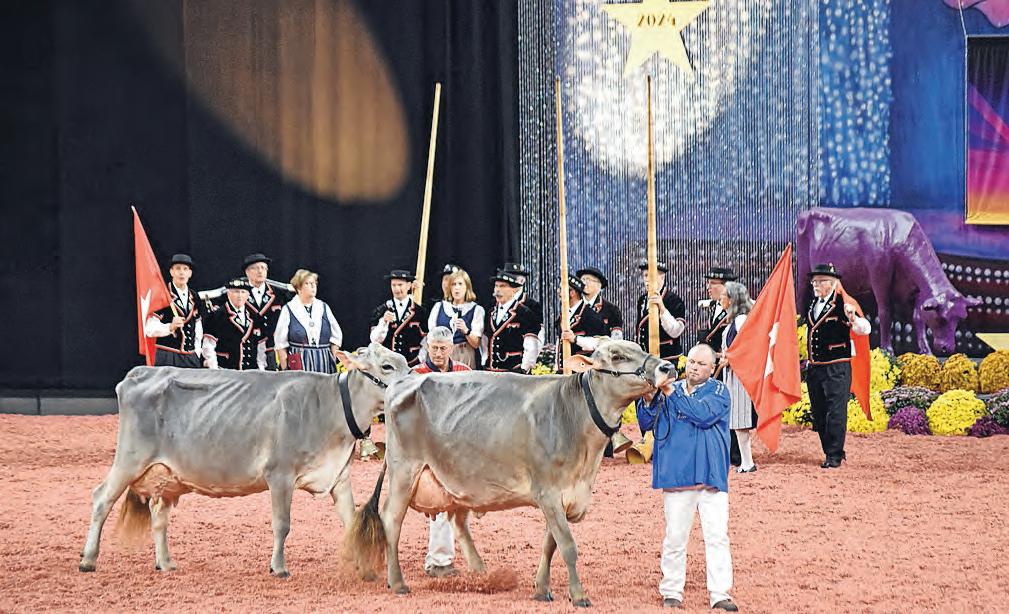





Stimulates the digestion of hydrogen sulphide and ammonia –a natural solution and game-changer for Aussie dairy cows!









BY RICK BAYNE
MADISON, WISCONSIN may be about as far away as possible from Ringarooma, Tasmania, but getting there has shown Jane Sykes the benefits of contributing to the dairy industry.
Jane joined Jersey Australia at World Dairy Expo in early October to promote the breed and Australian genetics and to help launch the 2025 World Jersey Conference that is coming to Australia.
It was a huge commitment that involved more than a day of travel each way, but for Jane it was worth every minute.
Her involvement with the trade mission and conference launch continues her passionate commitment to the breed and dairy industry. It is something she hopes to instil in others.
Jane farms with her parents John and Katrina, her brother Jason and his wife Zoe, while younger brother Mark and his family are off farm.
The farm is 95 per cent Jerseys, with a few stud Ayrshires purchased for Katrina as a birthday present.
They recently sold some land and cut back to just over 500 milkers, but since then they have topped up with a new adjoining block that includes a gravel pit and a lot of trees and they are about to purchase another nearby block.
“It’s more consolidated rather than being 10km down the road,” Jane said.
“What we sold was beautiful land and we are not replacing like-with-like but we will be able to diversify.
“Some will remain in trees and because it traditionally gets quite wet in winter, we’ve now got the gravel pit for laneways instead of having to buy it in.”
They are also upgrading the home farm with a new water system and roo fencing.
Along with two workers who help on the 40-unit rotary dairy, the Sykes family shares the on-farm jobs.
“We do whatever is needed,” Jane said.
“One thing I love about farming is that you’re not locked into a box. The variety of jobs can be done by anyone at any time.”
Jane completed a Bachelor of Ag Science with honours and worked in nutrition sales on the mainland for a couple of years, but didn’t click with a sales role.
“Animals are my passion but I didn’t enjoy the sales side of it,” she said.
She moved back to the farm 10 years ago and found her niche.
“I love the diversity of the jobs, everything from payroll to working with the animals, growing grass of the cow-eating variety, doing soil samples and trying to achieve the best production we can.
“The thing about farming is that you can always improve.”
Jerseys are well suited to the farm.
“Our family has a long history with Jerseys,” Jane said.
“To me, a good cow is a good cow no matter
what breed it is, but I have a real passion for Jerseys.
“On our farm they’re great because they are lower weight, which helps over wet winters, and I love their nature. I love the way they milk and they’re real characters, inquisitive and intelligent.”
Production-wise, Australian Jerseys are highly successful and Jane says the breed is in a good spot.
She joined the Jersey Australia board about eight years ago, becoming the youngest member at the time, and is now chair of promotions.
She is as passionate about contributing to the breed and industry as she is about farming.
“It’s really important that you have people to lead,” she said.
“Organisations like Jersey Australia don’t run themselves. Whether it’s a breed association, a youth group or a sports club, participation is so important.
“Domestically, the dairy sector isn’t growing. There are parts doing quite well, but in Tasmania our cow numbers might not be dropping, but we’re getting larger farms with higher numbers of cows.
“You could argue that the number of people in the industry with a true passion for it is in decline.
“The bigger farms employ people but they might only be here for a year or two and move on. There’s nothing wrong with that because labour is so hard to get, but we need people in the industry who can stand up and be part of it.
“There’s no use standing back and saying I’m not happy if you’re not willing to put your hand up and try either to change things or be part of the decision-making process.
“Organisations are only as good as the people who step up. If nobody steps up, what happens to the organisation?”
Which brings Jane to Madison, on the east coast of the United States, just like 2014 when she won a scholarship to go to the World Jersey Conference in South Africa, or a few years later when she toured the United Kingdom on a Jersey farming expedition.
“The flight times remind you how isolated we are in some respects in Australia when it comes to events like World Dairy Expo. This is much bigger than anything we have,” she said.
Jane has been a regular at International Dairy Week and Ag Fest for the past 15 years, but this was her first visit to the expo.
While she was there was for the Jersey promotions, she was also keen to see the event from a persona perspective.
“Madison is something a lot of people talk about,” she said.
“Coming over here is a whole different world. The amount of people around and the engagement and level of support is much bigger than anything I’ve seen over our way.
“I walked through the trades shed and spoke to people about a mastitis detector, on-farm semen tester, regenerative ag. There’s so much to learn.
“I’m passionate about the long-term ongoing viability of our industry. We have enough
Advertising Max Hyde 0408 558 938
max.hyde@dairynewsaustralia.com.au
Editor Sandy Lloyd (03) 5820 3252 editor@dairynewsaustralia.com.au
Regional editor news@dairynewsaustralia.com.au


challenges that we need to look at now but we have to look at 20 or 30 years’ time when I still hope to be farming.”
Jane was particularly impressed with the focus on animal welfare.
“There were people talking about housing cows on water beds to go on top of concrete in stalls so the cows are more comfortable,” she said.
“There’s research about increased growth rates of calves when they are given something to play with.
“The level of automation going on in the industry is amazing.”
Jane says it’s important to take time to find out what’s happening in the industry and what’s coming up and she encourages Australian farmers to join the 2025 Jersey tour or even consider
Publisher Shepparton Newspapers Pty Ltd
Printed by Newsprinters Pty Ltd
Head Office 7940 Goulburn Valley Highway Shepparton, VIC 3630
Phone (03) 5831 2312
Postal address PO Box 204
Shepparton, Victoria 3632 Australia
going to the World Dairy Expo.
“I encourage people to seek information however they can, whether that’s travelling to Madison or going to your local AgFest,” she said.
“I wasn’t sure what I was walking into, but it’s a whole different world over here. If you have a genuine interest in what’s going on now and what the next 15 or 20 years are going to bring, it’s well worth coming over and having a look.
“A lot of what they are doing here is going to drive the industry forward and there’s never a day you can stop learning as a farmer.
“We have to keep moving forward. We can’t control the cost of input prices, but we can control the type of cow we breed and how we run her through that system.”
Dairy News Australia welcomes contributions from stakeholders in the dairy industry, and particularly from organisations wishing to advance the industry.
Contributions and photos can be sent to: editor@dairynewsaustralia.com.au
Letters to the editor on topical issues are also welcome.
Letters should be concise and carry the name and town address of the author, as well as a contact phone number, not for publication.







CowManager ear sensors measure ear temperature combined with behaviour, resulting in more accurate and earlier alerts.
You’ve got all you need in the palm of your hands with the CowManager app. Precise conventional and sexed semen use with the insemination window, early health alerts for mastitis and pneumonia. We help you stay ahead of the herd.
Visit www.cowmanager.com/australia or scan the QR code.

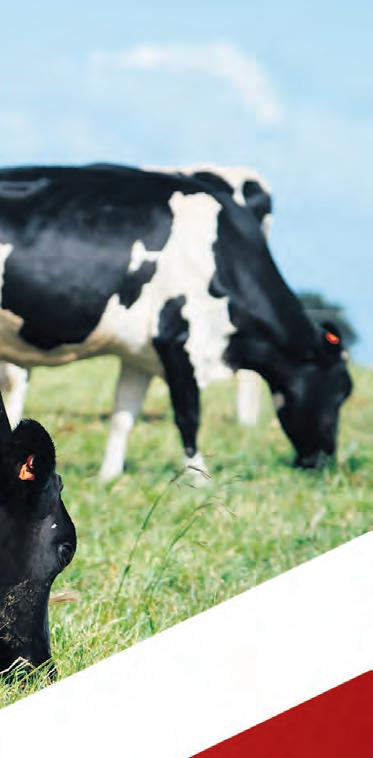











BY RICK BAYNE
AUSTRALIAN JERSEYS cows will be showcased to a global audience next year with the 2025 World Jersey Conference being launched in the United States in October.
The World Jersey Cattle Bureau opened the conference at World Dairy Expo in Madison, Wisconsin, with up to 100 farmers from across the globe expected to make the trip Down Under in April 2025.
The conference is already generating strong interest with more than 2000 views of the launch video in the first few hours.
Australia will be hosting the conference for the first time since 2011. It will start in Melbourne on April 6 and finish at the Royal Sydney Show Jersey judging on April 21.
International guests from Europe, North America, South America, New Zealand and Asia are expected to join local Jersey farmers on the tour.
Speaking at the World Dairy Expo, Jersey Australia general manager Glen Barrett said hosting the tour was a great opportunity to showcase the Australian Jersey cow and build on strong global marketing over the past three years, including a site at the World Dairy Expo.
“The campaign has had a very positive impact and we have seen that interest in our jerseys at World Dairy Expo this year, including a number of animals in the ring and in Jersey sales sired by Australian bulls,” Mr Barrett said.
“It’s important to capitalise on that work and bring global breeders to Australia and show the strength of our Jerseys and our local industry.”
An itinerary has been developed and will take visitors through Victoria’s dairy regions and the NSW south coast, including the Central Gippsland Jersey Autumn Fair.
“They will visit some of our premier herds, including Master Breeder herds and the number one Jersey merit herd, along with some newer herds who will be showcased for the first time,” Mr Barrett said.
“This as a celebration of Australian Jerseys, with a strong focus on Australian cow families and sires.”
The conference was last held here in 2011 when Australia stepped in after a tsunami hit original host Japan. It was meant to return to Australia in 2021 but was deferred because of the COVID-19 pandemic.
This year the conference is in Denmark and it was held in Guatemala in 2023 and in Kenya and Rwanda in 2022.
Domestically, Jersey numbers have been increasing year-on-year and Jerseys now account for more than 15 per cent of the national herd, up from 10.5 per cent 15 years ago.
Mr Barrett predicted that interest in local Jerseys would spike after the conference.
“Bringing international Jersey breeders here to see first-hand the high-quality cattle we’re breeding from high-quality Australian bulls will definitely benefit our local industry,” he said.
“The conference rotates around the world and we think we have the best Jersey cows in the world, so we wanted to showcase them.
“There is certainly a growing market for Australian Jersey heifers and Australian genetics and this will be a great opportunity for Australian businesses to support the event and promote their Jersey genetics and products to the world.”
The World Jersey Cattle Bureau represents Jersey breeders, and their organisations, around the world. There are five world regions of the bureau — Africa, Asia/Oceana, Europe, Latin America and North America.
World conferences have been held since 1949.
A local committee is being formed to support the conference tour planning.

Australian genetics are set to launch into Latin America with a new campaign to highlight the success of the country’s grazing systems.
The ‘Best Mate’ campaign launched by GENEX and URUS on October 4 at World Dairy Expo in Madison, Wisconsin, will target a number of Latin American countries including Uruguay, Brazil, Chile, Peru, Ecuador and with a particular emphasis on Argentina.
The new campaign is a successful outcome of the joint venture between URUS, GENEX and Genetics Australia that was formalised in 2023.
Speaking at the launch in Madison, Genetics Australia export manager Rob Derksen said Latin American countries mostly grazed their cattle in a similar system to Australia but didn’t know a lot about the success of Australian genetics.
“The only grazing systems many know about is New Zealand, but we feel our product is better suited to these regions as farmers use similar systems to Australia
and rely on pastures plus supplements as the main source of feed,” he said.
Genetics Australia has started the push with recent exports to Chile and upcoming sales to Peru and Ecuador.
“This is our first international exposure of our Australian genetics as part of the joint venture,” Mr Derksen said.
“We believe there is a good market there with substantial room for expansion, particularly through the networks that have been created through the joint venture with URUS.
“Getting the most productivity from grazing systems starts with the right genetics and Genetics Australia is uniquely placed to help farmers in Latin America to breed a better grazing herd.”
Australian farmers Con and Michelle Glennen from White Star Jerseys in Noorat in south-west Victoria and Sandra Bacon from Brookbora Jerseys in Tennyson in northern Victoria also presented at the launch, along with Jersey Australia general manager Glen Barrett.

better cows contribute to a better world,” Mr Muxlow said.
Genetics Australia has joined Jersey Australia and other Australian companies on a joint site at World Dairy Expo over the past three years.
Alta Genetics was also part of the URUS company and was part of the launch at World Dairy Expo. This was the first presentation of its type conducted by Genetics Australia at World Dairy Expo and featured video of Brookbora, White Star, Ravens Hill Australian Reds and Tesbury Holsteins. Mr Derksen said the event created a lot of interest from multiple countries.
URUS chief operations officer Kevin Muxlow said the world needed a cow to do more with less to feed a growing population.
“We believe genetics are a key part of making a better cow and that

“We want the world to know that we achieve high productivity cows suited to diverse grazing systems that can go the distance with strong feet and legs, have excellent feed efficiency and are reproductively sound,” he said.
“Australian Genetics has a lot to offer and I’m sure as more counties experience how our genetics perform, we can expect growing demand.”



Caring for your crop at key times will help maximise yields and ensure your livestock get the most from the Forage brassica crops. Exirel® uses clever chemistry to protect forage brassicas from destructive pests like Cabbage white butterfly, Centre grub, Diamondback moth, Native budworm, Soybean looper and Grey cabbage aphid. It’s also gentle on key beneficial insects. Visitag.fmc.com/au for more information.











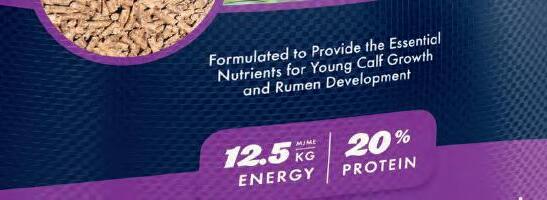




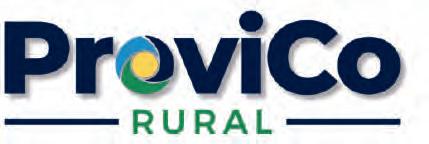


BY SOPHIE BALDWIN
SOUTH AUSTRALIAN dairy company
Beston Global Food Company has gone into voluntary administration, leaving some dairy farmers owed hundreds of thousands of dollars.
About 40 farmers are owed money after only receiving partial milk cheque payments dating as far back as June. Some farmers are owed more than $500,000.
South Australian Dairyfarmers Association president Rob Brokenshire said it was a terrible predicament, made even worse by tough seasonal conditions.
“Some suppliers left Bestons in the beginning of July and found other processors to take them on, while 22 farmers stayed with the company,” Rob said.
He said it was a condition of administration those farmers be guaranteed payment of any future milk supplied as per contract conditions dated at the start of the administration process, however there was currently no provision to pay any backdated payments.
Bestons employs about 150 staff who are also working under administration.
“To be fair, there can be no government support until the administration process is properly assesed,” Rob said.
“Obviously these farmers are very stressed and are moving forward for the moment, but it is a major hit to their cash flow.
“At SADA, we are offering as much help and comprehensive support as possible.
“We are sending out regular communiqués, ringing farmers and myself and the executive team are available 24/7. We are also hosting virtual meetings with the administrator.”
Rob said the best-case scenario was if someone came along and bought the company.
He said expressions of interest closed on

October 9 and it was his understanding there had been quite a bit of interest.
“There is a creditors’ meeting scheduled for the end of October which should give us all a better understanding of where things are heading,” he said.
“It is very difficult for these unpaid farmers to continue to manage their cash flow.
“This has been a triple whammy on top a very difficult season due to lack of rain and no pasture growth, difficulty sourcing fodder with hay supplies exhausted and high input costs including inflation and interest rates.”
Rob said there were currently six processors in South Australia and it was imperative the facility continued to operate to continue to give farmers a choice in who they supplied.
The country’s peak dairy body says actions by Australia’s big supermarkets were pushing the dairy sector towards a devastating milk price war — for the second time.
Woolworths cut the price of its home brand milk on Sunday, September 23, claiming it was passing on savings from its processor.
Coles and Aldi reduced their prices within 10 days.
Australian Dairy Farmers said on Wednesday, October 9, that a second milk price war had begun with prices now at their lowest level since 2011, when Coles cut the price of its home brand milk to $1 per litre, followed by the other two supermarket chains.
ADF president Ben Bennett said the price war came at the expense of dairy farmers and processors.
“We all know supermarkets position dairy at the back of the supermarket and discount prices to get consumers in,” ADF president Ben Bennett said.
“They then make the majority of their profits on all the shelves consumers walk past on their way to the dairy section.
“Meanwhile, supermarkets justify their price decrease because processors have opened the season with lower farmgate prices paid to farmers.”
A ten to 15 per cent decline in farmgate income and high input costs have some
dairy farmers struggling financially .
“This will only serve to encourage more dairy farmers to leave the industry, which is bad news for all Australians,” Mr Bennett said.
A spokesperson for Woolworths said claims in the media of milk being priced at its lowest since 2011 were incorrect and the current price was its lowest in only two years.
Woolworths-brand milk was reduced from $1.60 per litre to $1.55 on September 23, 2024, prior to which it had been $1.35 in 2022.
The spokesperson said the supermarket was passing on savings currently received from the company’s supplying milk processors due to lower market-wide prices.
Woolworths does not have any control over the milk prices paid to farmers by the processor.
“It's important to note, this change in our retail price has not resulted in a reduction in payment to the farmers who supply our processors,” the spokesperson said.
“We’ve reduced the price of Woolworths branded milk to pass on the savings we’re receiving from our milk processors."
The ACCC stated in a 2020 report that private label pricing was not the cause of dairy farmers struggling with profitability.
“Domestic retail pricing strategies are unlikely to have a direct effect on farmgate prices,” the report said.
“It’s always good to have competition to ensure best possible farm gate prices,” he said.
Bestons is well known for producing high-quality, value-added products from its Jervois Bay facility, including cream cheese, hard cheese, whey and lactoferrin, a high-value dairy protein used in diet supplements.
It recently won several gold medals at the dairy gala awards.
It is believed a combination of high operating costs, dairy prices and a debt burden associated with the COVID-19 pandemic contributed to the company’s financial difficulties.
In a statement, Bestons chief executive Fabrizio Jorge said while the lactoferrin and cream cheese business had earned strong profits, the cheese and whey powder business had
incurred losses due to the ongoing cost and price pressures.
Japanese company Megamilk Snow Brands had offered to buy the facility, however the sale did not eventuate.
Megamilk already owns Udder Delights based in the Adelaide Hills, Unicorn Cheese in the Shoalhaven region, as well as Nowra Farmhouse in NSW and was previously known as the Nippon Milk Community Company.
Rob said the South Australian dairy industry had recently plateaued with only a few farmers exiting the industry.
“We are hoping for a quick resolution so the impacted farmers can get paid what they are owed and continue to do what they do best — produce milk and feed our nation,” Rob said.

to
years.
conditions
markets.
“Dairy
“It


BY JEANETTE SEVERS
A SIGNIFICANT percentage of the Australian dairy workforce is from overseas, with about 13 per cent from non-English speaking countries.
Many of them are university educated and on permanent visas and are seeking to build their wealth in the Australian dairy industry.
Dairy Australia is collating data on this topic from recent surveys. It will be released in coming months.
In the meantime, interviews by Dairy News Australia indicate the international workforce includes people who have sought asylum in Australia because they are persecuted in their original country, and others who have fulfilled other people’s dreams.
Many of them are bringing significant skills into dairy farming, including engineering, machinery maintenance, carpentry and veterinarian qualifications and experience.
In a submission in late 2022 to the Federal Government’s Migration Review, Australian Dairy Farmers identified one in four dairy farms in Australia was unable to find labour or access the skills they need for their operations.
ADF recommended workforce visas in the dairy industry have a pathway to permanent residency, rather than be temporary and seasonal visas.
The ADF submission said family farms and corporate farms were reliant on migrant labour for growth.
The cost of a visa needed to reduce and be competitive with those in other countries competing to attract migrants, particularly Canada and the European Union.
ADF claimed young people in particular from overseas were keen to access the permanent visa status to build a future in Australia.
Dairy News Australia interviewed a number of people who are now working on Australian dairy farms because they received a permanent visa.
Veterinarians Herbert and Karen Apostol are managing a dairy farm at Glengarry in Victoria.
They arrived in Australia in 2012 on a permanent visa, after applying to Canada and Australia for work as dairy farmers.
Javi Almonacid, a political lawyer, is from Chile and has been working on dairy farms in Australia for the past 18 months.
“Initially I was milking, but for the past year I’ve been calf rearing,” she said.
Her partner, German musician Ferdinand Wiesemann, arrived in Australia three years ago to work.
The couple now works on the same farm at Fulham in Victoria.


“Our plan is to stay in Australia and build wealth through working in the dairy industry,” Ferdinand said.
Dominik Da Silva Ribas was a cabinet maker and carpenter in Germany before he moved to Australia.
“My wife’s grandmother, Sarah Da Silva Ribas, travelled to Australia many times,” Dominik said.
Her influence and stories, and the welcome Dominik and his wife have received, have made them favour the country.
“We aim to settle down in Australia,” Dominik said.
He is working on a dairy farm at Fulham.
Lisa Reichert was a food technician in Germany and moved to Australia via New Zealand to work in the dairy industry.
She arrived in late September and is milking and calf-rearing on a dairy farm near Kilmany, in Victoria’s east.
“I was working in the dairy industry in New Zealand and Australia was on my bucket list,” Lisa said.
Robbie McKillop has a family background in dairy farming in New Zealand, where he was working as a machine operator.
He has been working on a dairy farm at Nambrok, Victoria, for the past 18 months.
Robbie has a partner and young family and hopes to own a dairy farm one day.
“Within five years, I’d like to be sharefarming,” he said.
Frenchman Numa Heritier also works on a dairy farm at Nambrok.
In France, Numa worked as a machinery maintenance technician.
He has been working for the past year as a general farm worker.
“I’ve fallen in love with my farm job and dairy farming,” Numa said.

Brothers Gurkan and Gurcan Tiryaki were both engineers in Turkey before moving to Australia to work in the dairy industry.
Gurcan arrived in Australia first, on a protection visa, five years ago. Gurkan followed him three years ago.
Both men work as general farm workers for Aurora Dairies (previously known as Warakirri Dairies).
“We receive better pay and work in better conditions in Australia,” Gurkan said.
The opportunities to build a career in the dairy industry are also being recognised by Australians.
Alex Simmons grew up in Sale, Victoria, and has spent the past three years working in the dairy industry.
He is currently studying for a Certificate IV in agriculture.
“My plan is to manage a dairy farm,” Alex said. David Softley was a fisherman in Darwin before taking up the opportunity to work on a dairy farm in Gippsland.
“I completed a Certificate II in agriculture at school,” David said.
He was inspired from that qualification to work in agriculture. After finishing school, David worked in the commercial fishing industry.
He has been working in the dairy industry for nine years. For the past four-and-a-half years, he has been the senior farm hand on a dairy farm near Kilmany.
“My role is people management, training workers and herd management,” David said.
“I’ve always been good with animals and I enjoy working in the dairy industry.”
Veterinarians Herbert and Karen Apostol are managing a dairy farm at Glengarry, in Victoria.
They arrived in Australia in 2012 on a permanent visa, after applying to Canada and Australia for work as dairy farmers.
Originally from the Philippines, the couple had a long journey to get to Australia.
Both were qualified vets before arriving in the country. Herbert was a large animal vet, while Karen was a small animal vet.
Karen said they left the Philippines to seek a better life.
In 2009, Herbert moved to Saudi Arabia to work on a dairy farm. Karen was unable to join him, but moved to Canada where she continued to work as a vet.
Both of them wanted to move to Canada permanently.
“We were both hoping to emigrate to Canada as veterinarians,” Karen said.
“We applied to Canada and Australia for visas.”
Their application status to Australia was as dairy farm workers.
In 2012, Herbert and Karen received offers of permanent visas to Australia.
“We were accepted as dairy farmers,” Karen said.
The first dairy farm they worked on was at Pyramid Hill, Victoria.

Unable to work as a vet, Karen also used that time to retrain as an early childhood educator.
“I was able to gain my diploma qualification in early childhood education,” she said.
Herbert was working as a dairy farm worker.
They set up a business in farm contracting management and on July 1 this year they began working with Will and Mikayla Killeen on their dairy farm at Glengarry.
“Herbert is the farm manager and I assist him,” Karen said.
“Herbert also manages the farm’s labour units.”
They are currently seeking a relief milker.








BY JEANETTE SEVERS
THE IRRIGATION season in Gippsland began on August 15, and irrigators are waiting to hear about their summer water entitlements, with a decision pending on December 15.
Irrigation water in Gippsland is managed by Southern Rural Water and allocated according to high and low security water licenses.
The season runs until May 15, depending on water levels in storages.
Many irrigators in the Macalister Irrigation District (MID) look to December 15 for an announcement of whether their high reliability shares will revert to zero in December.
It is commonly referred to as the ‘spill’, when storages such as Lake Glenmaggie are full or at close to full level.
A ‘spill’ enables farmers to irrigate with security of supply over summer. All water used from the start of the season to the date a spill is announced (from August 15) is credited against the irrigator’s allocation.
It enables farmers to continue to irrigate, especially over the hotter summer months, with their full seasonal allocation to use.
A relatively dry winter in many parts of Gippsland saw dairy farmers eager to begin irrigating when the season opened for their high reliability water shares on August 15.
At season opening, Lake Glenmaggie was at 75 per cent capacity and irrigators from this system were guaranteed 80 per cent allocation for their high reliability water shares.
The allocation is reviewed each fortnight


during the season.
A wet spring so far has increased Lake Glenmaggie’s capacity. At the time of writing it had increased to 95 per cent, against inflows upstream and regular users downstream.
Blue Rock Lake was at 99 per cent capacity at time of writing and Lake Narracan was at 72 per cent.
Farmers have been assured 100 per cent of high reliability water shares and zero allocation of low reliability water shares. The next allocation review is on December 15.


Waiting for irrigation has put many dairy farmers’ harvest plans on hold.
Yarram dairy farmers Andrea and Graeme Barlow use bike shift laterals and centre pivots to irrigate their property, using groundwater from bores.
With an ongoing dry season, they need rain to supplement irrigation.
“We’ve been too busy with calving but we need to start irrigating now,” Graeme told Dairy News Australia in early October.
“Normally, we’ve begun harvesting silage
before now, but we’re about another week away from our first decent cut.”
It was a similar story for other dairy farmers in the MID.
Tim Crooke, of Boisdale, has been irrigating for the past three weeks to build up a feed wedge. He irrigates on Sundays.
“Sunday is off-peak power for irrigating, which suits me,” Tim said.
“The hay sheds are 90 per cent empty because we’ve had to feed out so much during winter.
“I’m irrigating to build up a feed wedge.”
James Clyne, of Newry, said he would take two inches of rain now if he could get it.
“I’ve irrigated once,” he said.
“Silage harvest is about two weeks away.”
Alister Clyne, of Tinamba West, has also irrigated once since the season opened.
“We had a good rainfall for August,” he said.
“Silage is a fraction slow.
“We’d normally be cutting silage now, but it’s about two weeks away.”
In contrast, south Gippsland farmers have received regular and sufficient rain and are more worried about being bogged and pugging.
Binginwarri’s Warren Oakes is one of these dairy farmers. He irrigates his farm where needed using dam water.
“We got bogged the other day putting out feed for the cows,” he said.
He dispersed fertiliser on his turnout block in late September to encourage growth and build a feed wedge.
“We’ll make silage out of that,” Warren said.
“We’re aiming for November to make silage.”



























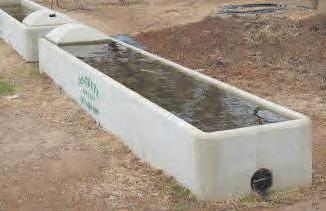










































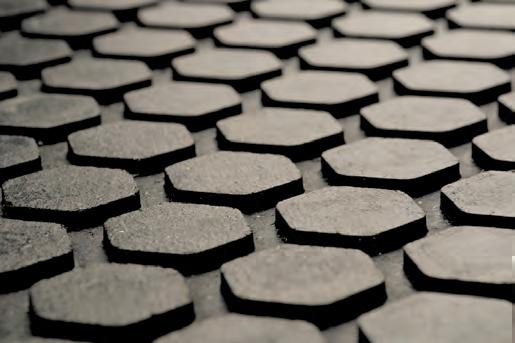






MELBOURNE-BASED PURE Dairy is partnering with the United States’ leading natural and processed cheese packager, Great Lakes Cheese.
In the past decade, Pure Dairy has gone from being a local business to building a vast trading network across 72 countries and opening four international offices.
The investment from Great Lakes Cheese will provide further impetus to this exponential growth, starting with Pure Dairy’s brandnew Victorian production facility, which is set to open in 2025.
Pure Dairy’s day-to-day operations will remain under Australian management.
“The investment from Great Lakes Cheese accelerates our plans to acquire further assets and consolidate Australia’s position as one of the world’s top dairy producers,” executive chairman Adrian Josephson said.
Great Lakes Cheese’s vice-president and chief financial officer Mark Anderson said the company was impressed by Pure Dairy’s existing global footprint and was excited to be part of its expansion.
“Their strong relationships and deep understanding of individual markets assured us that Pure Dairy are the right partner for us as we now make our very first investment outside of America,” he said.
With easy access to dairy producers and the booming export hub of Port Melbourne, Pure Dairy’s new plant will encompass an R&D kitchen, manufacturing, warehousing and logistics, as well as the Pure Dairy corporate office.
Featuring innovative state-of-the-art manufacturing equipment, this facility will guarantee lean manufacturing and environmental sustainability to the highest accreditable global standards.
“The new facility will be a great asset to everyone in Australian dairy, because although we’ll now have our own production lines, the plant will also be open to collaborative as well
as white-label manufacture — and we’ll continue to serve our customers with data-driven, unbiased advice,” Mr Josephson said.
“Great Lakes Cheese is well positioned to support sales of Australian dairy products to American retailers and food service businesses through their strong network.
“The synergies that our partnership creates are endless.
“Today’s dairy industry is about constantly looking for new opportunities, always employing the most powerful way to think about dairy. For this, there’s no stronger partner than Pure Dairy. We go beyond transactional business to form strategic relationships, and we have the global insights required to succeed.”
Established in 2011, Pure Dairy has evolved from a foundation in dairy commodity trading to include a full range of consulting and trade services across international commodity trading, food services and retail.
Pure Dairy’s multi-disciplinary teams cover every aspect of these complex value chains. They are constantly communicating with all parts of the industry — farmers, manufacturers, food service distributors, restaurateurs and consumers — right around the world.
With four international offices, Pure Dairy has forged strong relationships in some 72 countries.
Great Lakes Cheese is a leading natural cheese packager, an award-winning cheese manufacturer and a trusted long-term partner for a variety of retail, food service, and ingredients customers.
The company has a national footprint with facilities in Ohio, New York, Tennessee, Utah, Wisconsin and Texas.
Specialties include natural and processed shreds, slices, chunks and snack products. Family and employee-owned, Great Lakes Cheese celebrated its 65th year in business in 2023.
The a2 Milk Company (a2MC) has expanded into the Vietnamese market, offering six products including a2 Platinum junior milk drink, nutrition for mothers, milk powders and UHT long-life full-cream milk.

Improve your dairy parlour’s efficiency and productivity with milking automation that reduces your labour requirements. By streamlining and optimising manual tasks, our laboursaving milking automation reduces physical work and operator fatigue while minimising animal stress, ensuring the well-being of both workers and animals.

The a2 Milk Company held a launch event for its a2 Platinum early life nutrition range with retailer partners in Hanoi, Vietnam in September.
The a2 Milk Company also showcased a2 Platinum at the VietBaby Fair, a conference and trade fair in Hanoi on September 26.

The a2 Milk Company has launched its products in Vietnam.

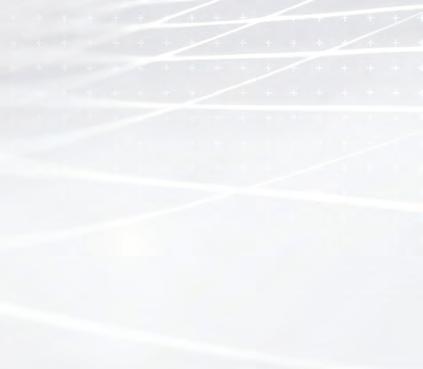







The a2 Platinum range of products began entering retail outlets in late August in preparation for the trade fair.
The company’s products are sourced from cows that naturally produce milk with only the A2-type beta-casein protein and no A1.
International managing director for a2MC Yohan Senaratne said Vietnam was becoming a mature market with a growing interest in products sourced from reputable companies.
Mr Senaratne said a2MC had a stand at VietBaby in Hanoi, in collaboration with local distributor Live Well.
Managing director and chief executive David Bortolussi met with local distributors and officials while chief science advisor Dr Andrew Clarke hosted an information seminar highlighting the benefits
of naturally A1 protein-free milk.
“We will work with our distributors, retailers and consumers to ensure that the unique benefits of A1 protein dairy products become widely known: that a2MC’s products are sourced from cows that naturally produce milk with only the A2-type beta-casein protein and that our products are free from artificial growth hormones and antibiotics,” Mr Senaratne said.
“Our early life nutrition products and milk powders are made with milk from New Zealand’s famously rich and pure dairy regions.”
The a2 Platinum launch event and VietBaby Fair was attended by representatives from New Zealand’s embassy in Vietnam as well as guest speakers from Vietnam’s National Institute of Nutrition.




Unparalleled heat detection.











A good fodder season and water allocation are thought to be behind northern Victorian dairy farmers having a positive outlook for the coming months, according to the nation’s most comprehensive quarterly farmer survey.
The Rabobank Rural Confidence Survey is a comprehensive monitor of outlook and sentiment in the country’s rural industries and questions an average of 1000 primary producers across a wide range of commodities and geographical areas throughout Australia every quarter.
The third quarter survey results were released on Monday, September 16, and showed that farmers in northern Victoria had lifted the average rural sentiment after
a ‘reasonable’ season, compared to the rest of the state.
Northern Victorian dairy farms added to that bucking of the state-wide trend.
The survey found the majority of dairy producers in Victoria (50 per cent) thought farm business conditions were likely to weaken in the coming 12 months (down from 55 per cent), while 41 per cent expected conditions to remain unchanged.
Rabobank state manager for Victoria and Tasmania Sally Bull said seasonal conditions had been mixed across the key Victorian dairy regions.
Victorian farmers, particularly those in the south-west of the state and
parts of Gippsland and the north-east, had been managing a drier than average winter.
“The sizeable milk-production regions in the state’s west have been affected by the severe rainfall deficiencies. However, seasonal conditions elsewhere have been mostly favourable,” Ms Bull said.
“In the northern Victorian irrigated dairy regions, dairy farmers have experienced reasonably good seasonal conditions, although the most recent rainfall events have been variable.
“Most northern dairy farmers are expected to have a big season for fodder production and a good water allocation for this season.”

Rabobank’s Sally Bull says that northern Victorian irrigated dairy regions have experienced reasonably good seasonal conditions, although the most recent rainfall events have been variable.
WHEN CAMERON and Tracey Bawden installed CowManager almost four years ago, they did it to improve their dairy business and help them enjoy their lifestyle choices with their family.
The Bawdens are a ‘sports mad’ family and have adapted their dairy operation so that it can accommodate their sporting commitments without compromising their business.
“Installing CowManager has allowed us to be on the go with the kids five nights a week and on weekends, when we do a lot of travelling,” Cameron said.
Their two daughters, now 10 and 12, play basketball in Gippsland, Melbourne and in regional Victoria. It’s not unusual for them to play or train every night of the week and on weekends. Ainsley, the elder of the two, is now in the state development program and Cameron also coaches, having been a talented junior basketballer.
They have been on their current dairy farm at Labertouche in Victoria’s west Gippsland region for six years. They are on a lease-purchase arrangement, milking 250 cows at peak. Both Cameron and Tracey are from dairying families from Tasmania and Victoria.
“We have one full-time and one part-time employee,” Cameron said.
“The full-timer milks in the evenings and that allows us to go to basketball with the kids.
“We both enjoy being with the kids and watching them play.”
Choosing CowManager’s ear sensor system was a ‘no-brainer’ for Cameron, who had been through the full round of visual heat detection systems, putting stickers on cows in a herringbone, which posed OHS risks for staff, and fixed time systems, which he said don’t really add up with a small herd.
“I liked the ease of the ear tags but one of the clinchers for choosing CowManager was that Paul (Quinlan from World Wide Sires) got the quote through to us in four hours,” he said.
That meant they were able to apply immediately for a government digital technology grant which paid for about 50 per cent of the installation cost of the CowManager system.
“The grants go out the door pretty fast, so Paul’s quick response made it possible for us to get an application in and receive the grant.”
Paul and Cameron installed the ear tags and set up the antennas around the farm. The system integrates easily with their management system, Easy-Dairy. One of the benefits of the integration between CowManager and EasyDairy is that there is only one set of data to be input and this is updated once a day.
“CowManager links in very easily for small herds with little automation,” Cameron said.
The Bawdens use CowManager mainly for

heat detection and cow health alerts.
“I learnt very early on to believe the health alerts,” Cameron said.
“When a cow went down, CowManager sent an alert, and I did not act quickly enough.
“But now, if we’re away, it’s all on the iPhone. If we get a health alert on a cow, we can advise the worker which cow to check. He knows the cows.
“If we suspect a health problem ourselves, we can check the cow’s health and its rumination on CowManager to confirm.”
Heat detection has become more precise using CowManager and, once again, the system
can be used to meet their lifestyle choice, as well as improving in-calf rates and making savings on semen.
“One of the advantages with CowManager is that it gives us optimum timing for joining. This is critical when we’re using sexed semen,” Cameron said.
“In other situations, I can decide whether to use conventional or sexed if I know I’m going to be at basketball. That way we can work the joining around our lifestyle and optimise our chance of a pregnancy.”
Since installing CowManager, Cameron says they have halved their semen use.
“In almost four years we’ve never had to call on back-up or support,” Cameron said.
“It’s good to know it’s there, but we haven’t had to use it.”
Although he has not ‘crunched the numbers’ on CowManager Cameron knows they are getting cows in calf quicker. This is because he can go to the phone, check the cow and mate her at the optimum time, ensuring more successful pregnancies.
“If anything, I would say we are probably not using CowManager to its full potential, but we are definitely getting good value for the dairy and for ourselves,” he said.

cow welfare with

herd and farm management software

Heat detection and health monitoring with CowScout

Introducing CattleEye, the revolutionary Artificial Intelligence driven system designed to quickly detect and predict lameness in cows. CattleEye utilises a camera and software to capture and monitor the cows’ movement patterns. The software then analyses this data for any irregularities in the animals’ movement patterns and flags them in the system, allowing you to make more informed management decisions.
Say yes to next generation smart farming! GEA’s DairyNet herd and farm management is a game changer and delivers the exact information overview you need for daily monitoring and decision-making in your automated milking operations. Simplify your life and manage cows, herd and operational tasks with top accuracy.


GEA DairyRobot
CowScout is an easy to use animal health and heat detection monitoring system designed to immediately alert you when individual animals deviate from their normal behavioural patterns. When changes in activity, eating and rumination are elevated sooner, conception rates can improve and health challenges can be quickly addressed.
Contact us today to find out about our new pricing options!

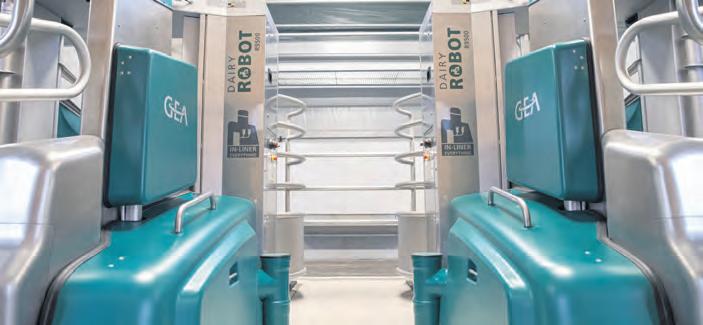
Enhance your dairy farm’s productivity and cow welfare with GEA’s DairyRobot. Designed to optimise the milking process for your cows and help you make the most of your time, the DairyRobot is ideal for all herd sizes. It provides greater flexibility, increased efficiency, improved work-life balance and enhanced cow health. Available for barn or pasture based systems with voluntary or batch milking AMS.


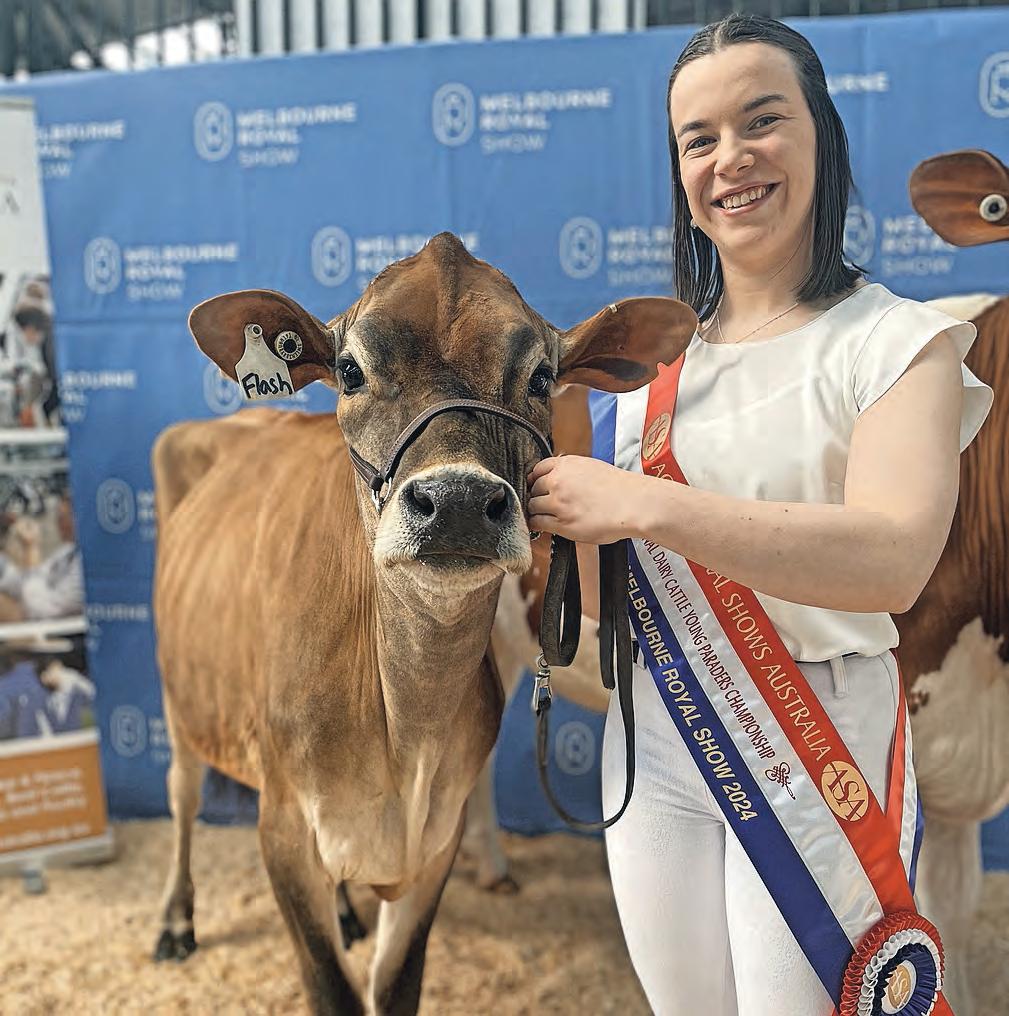
BY GEOFF ADAMS
SOUTH AUSTRALIA'S Lucy Newman
topped the competition in the 2024 National Dairy Cattle Young Paraders Championship at the Royal Melbourne Show.
Lucy, 21, from Prospect Hill, was one of a group of elite paraders aged between 15 and 25 who qualified through regional and state events
After showcasing their expertise in preparing, presenting and parading their animals, Lucy was awarded the top honour, solidify-
International Dairy Week and the champion senior handler at the Royal Adelaide Show.
At this year’s Melbourne Royal Show, Lucy competed in both the dairy and beef cattle paraders finals.
“I have always adored handlers competitions and feel lucky to be representing South Australia for both the beef and dairy cattle in the 2024 national paraders competition. It’s truly a bucket list moment,” Lucy said.
Lucy runs her own Ayrshire stud, Arabesque Ayrshires, and credits much of her success to the mentorship of her father and the hands-on experience gained from working on her fam-
Australia’s most promising young dairy cattle judges delivered an impressive display of skills and expertise at the 2024 National Dairy Cattle Young Judges Championship, held at the Melbourne Royal Show in September.
Emerging victorious was 19-yearold Patrick English from Malanda, Queensland, who has now positioned himself as one of Australia’s top talents in the agricultural sector.
This prestigious competition, organised by Agricultural Shows Australia, brought together elite judges aged 17 to 25 from across the country, all of whom qualified through competitive regional and state events.
Patrick, whose family has exhibited Illawarra cows at their local show for 108 consecutive years, was honoured to win against a talented field of competitors.
“I have lived all my life on a dairy farm, and winning this championship is a dream come true,” Patrick said.
“It’s an incredible opportunity to represent my community and the hard work of my family.”
Patrick’s competitive judging path has been marked by a number of notable achievements, including a recent victory in the State Young Judges Finals held at his local show in 2023, qualifying him for this year’s national competition.
The dairy cattle young judges competition assesses who most accurately places the animals from first to fourth, according to their form and characteristics, and justifies their assessment.
Competing alongside Patrick were five other state champions, all demonstrating excellent analytical and communication
for its annual bull sales.
Lucy competed alongside five other state champions, who all demonstrated clear technical abilities and a passion and dedication to the dairy industry.
In second place, representing Victoria, was 17-year-old Sienna Ross, who hails from a family dairy farm in Katamatite, northern Victoria.
Third place was awarded to NSW representative Alexis Allen, 15, from Cobargo, near Bega Rachel English, 23, from Malanda, Queensland, Edward Dudfield, 16, from Somerset, Tasmania, and and Murray Findlay, 21, from Albany, Western Australia, also contended for the lead position.

Agricultural Shows Australia executive officer Katie Stanley highlighted the significance of the young dairy cattle paraders event.
“These young paraders are the future of

skills, as well as an evident passion for the dairy industry.
In second place was Angus Fraser from Tongala, Victoria, who had qualified for the second year in a row to represent Victoria at the national finals.
Third place went to 25-year-old Bridget Liebelt from Meadows, South Australia, who runs her own stud, Torlea Holsteins & Ayrshires.
Agricultural Shows Australia executive officer Katie Stanley congratulated Patrick on his achievement.
“The National Dairy Cattle Young Judges Championship is a keenly contested event and Patrick should be proud of the hard work and dedication it took to reach this prestigious level,” she said.
agricultural competitions, which play a critical role in improving Australia’s food and fibre sectors,” she said.
“The National Dairy Cattle Paraders Championship is an invaluable opportunity for these young people to showcase and refine their skills.
“I extend my congratulations to Lucy Newman for the hard work and commitment that has brought her to this prestigious level, and I look forward to seeing all that she will accomplish in the future.”
The competition is part of ASA’s national competition program, which encompasses nine categories, including beef cattle, dairy cattle, alpaca, poultry, Merino sheep, meat breed sheep and Merino fleece judging, as well as parading competitions in beef and dairy cattle.




BY JEANETTE SEVERS
GEORGIA ANDERSON is a young woman carving out a career in agriculture.
Georgia is still at school but has worked in the dairy industry since she was 14.
Georgia started working at the neighbouring dairy farm in 2020 as a school-based apprentice.
“I started working in the calf-rearing shed and now I can do pretty much everything on the farm,” she said.
Georgia works on the dairy farm in Gippsland for up to two days a week, and full-time during school holidays. She is completing Year 12 at a local private secondary school.
Georgia also travels to Longerenong College, near Horsham, for one-week in-person blocks of study six times a year. At Longerenong, she is studying the Certificate IV in agriculture.
“I’ve also been doing work experience placement at one of the Nutrien Ag livestock agencies,” Georgia said.
Next year she will move closer to Longerenong College to undertake full-time study of the advanced diploma in agribusiness and applied agronomy.
Her ambition at the moment is to work in the livestock industry and she is keen to advance her knowledge of agribusiness.
“I like the stock agent side of agribusiness and the owner of the local Nutrien Ag agency

has already offered me an opportunity to work with them,” Georgia said.
“When I did work experience with them, Ben gave me lots of opportunities to try
different things and I enjoyed working with that team.
“He is also happy to help me get work in other Nutrien Ag branches.”
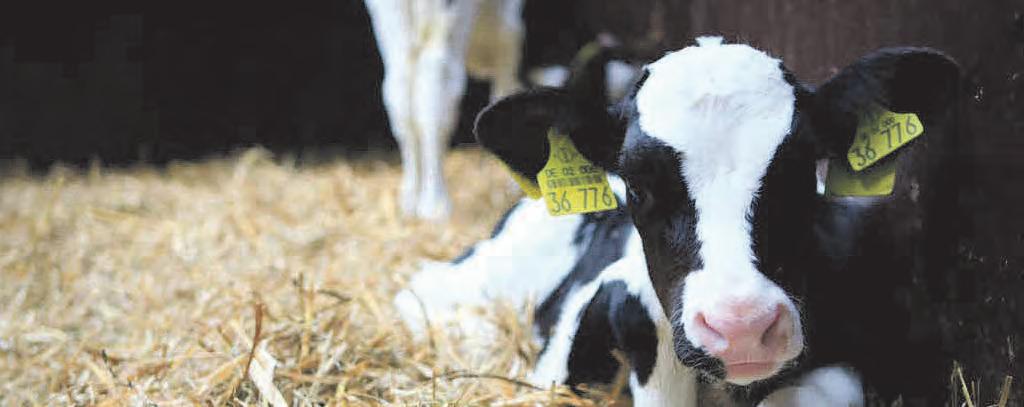





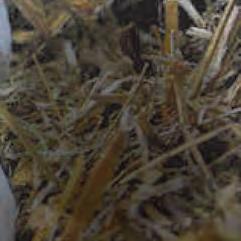
BY DR LES SANDLES
WE HAVE all heard it said that a butterfly flaps its wings here, and somewhere way over there a tornado results.
The term is closely associated with the work of mathematician and meteorologist Edward Norton Lorenz. The butterfly effect is the idea that small, seemingly trivial events may ultimately result in something with much larger consequences — a dramatic demonstration of
chaos theory.
As I ponder the outcomes of my recent research, I am beginning to see the analogy to our use of N fertilisers, in both the positive and the negative. Little were we aware when we first sprinkled some seemingly innocuous white granules of fertiliser N on our soils to boost pasture and crop growth of the far-reaching carnage we were about to wreak.
True, we certainly got the lovely boost of growth we were chasing, but at a cost which only became apparent much later: loss of soil

The GENEX HerdMonitor™ cow monitoring system will revolutionize your approach to cow management, by bringing you real-time solutions today for a successful tomorrow. This system features monitoring, with identification, rumination, fertility (heat) detection, all designed to take your herd management to the next level.
organic matter including humus, increased soil compaction, reduced water infiltration, complex nutrient run-offs and contributions to a myriad environmental issues downstream as a start.
On the flipside, with the knowledge we now have, reducing on-farm N inputs has far-reaching positive impacts on a global scale.
Critical benefits include restoring soil structure, increasing soil organic matter and rebuilding its humus and carbon stocks,
improving soil water retention, and increasing biodiversity.
This reduces erosion, but more importantly increases soil organic N production which, in turn, feeds the plant, saving the plant a lot of hard work.
This massively improves the nutritional balance of the plant, creating a healthier pasture or crop that is more resistant to disease because of the production of secondary metabolites. This is great for us and our livestock.
As the organic N not used by plants is slowly degraded, it is much less likely to be lost through leaching, run-off or volatilisation. Associated with this is the reduced environmental damage through algal blooms and GHGs — your environmental footprint crashes.
Unmatched monitoring features and management tools in a highly advanced, yet easy to use system.
Identification
Proven electronic ISO compliant cow identification in all your automated systems such as milking, feeding and sorting & routing equipment.
Heat Detection
Highly accurate heat detection with advice for the optimal insemination moment, as well as reproduction insights.
Health Monitoring
Individual health management for early detection of health issues and intensive monitoring of transition cows and post-treatment recovery.
Herd Performance Trends

The economics are important too. The more N your soil grows because of the microbial health, the less you need to buy. And it doesn’t stop at N — a healthy soil ecology includes P, Si, Mn, Zn solubilises which liberate these minerals currently tied up in your soil. They can even make water and create rain.
An additional, and for many a very surprising, benefit is the massive improvement in animal health when fertiliser N is reduced.
When I first noticed this, I convinced a couple of farmers to “play” with the idea and we saw the same thing over and over. Herd reproduction results also improved out of sight. These are all very good things in both the short and long terms.
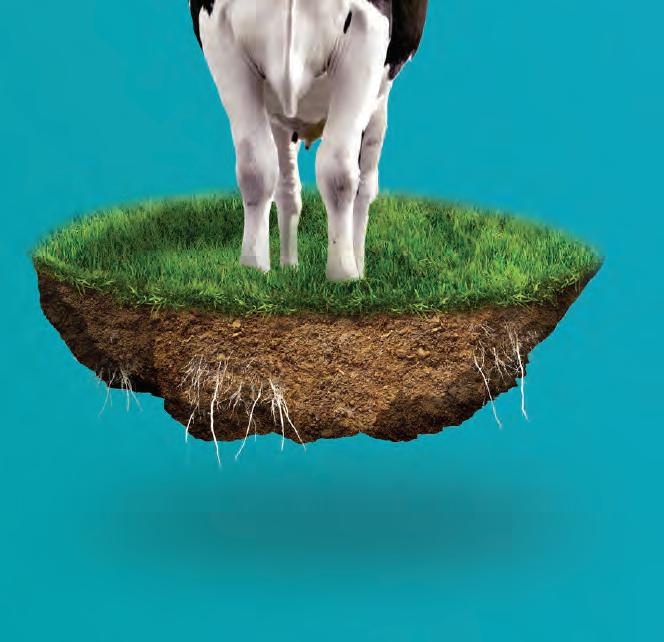
Chart the behavior patterns of groups and your entire herd. Get alerts when possible risks affect a group’s performance. Evaluate the impact of management decisions on herd performance to make improvements.
As food producers, we are under increasing scrutiny from the big end of town, be they government agencies, supermarkets, regulators or consumer groups. Each of these are foretelling us of their intent to crack down on our conventional practices and direct us towards sustainable, eco-friendly alternatives. In this rare case, such a move is positive in every reasonable respect. We can wait, or we can reap the benefits now.
Let’s go chase ourselves some nice healthy butterflies.
If you would like to know more, please find me on LinkedIn

BY GEOFF ADAMS
A NEW report has found Victorian dairy farm profits in 2023-24 were above the long-term average for the fifth consecutive year.
Dairy Farm Monitor is an annual survey tracking 80 dairy farm businesses statewide.
In 2023-2024, average profit was strong at $629,000 or $2.64 per kilograms of milk solids.
The varied seasonal conditions across the state for 2023-24 influenced performance and costs among the regions.
Average milk price fell slightly to $9.64 per kilogram milk solids — a one per cent decrease on the previous year’s very high price — while total costs for the 2023–24 period remained stable.
Milk income contributed approximately 91 per cent of gross farm income due to the strong milk price.
On expectations for profit, participants in each region had a weakening outlook for their business returns in the coming 12 months.
“With expectations for a lower milk price across most respondents in all regions for 2024-25, many farmers commented that they will focus on enterprise efficiency and reducing costs to negate the lower income (and dry outlook in the south-west),” the report found.
“Input costs, seasonal conditions and milk price were the highest ranked issues over the short and medium term.”
Compared to 2022-23, farm incomes fell due to a one per cent decrease in average milk price to $9.64 per kilogram of milk solids and a significant decline in livestock trading profits.
An increase in feed inventory in northern Victoria and Gippsland reduced costs in these regions, whereas most south-west Victorian participants drew down their fodder reserves to manage dry conditions.
Variable and overhead costs remained high and relatively unchanged on average for the state, compared to the previous year.
Northern Victorian participants on average had the most profitable year in 18 years. The average milk price in northern Victoria held steady, while costs were reduced, resulting in a healthy profit.
“Dairy Farm Monitor participants produced more milk across the state and increased homegrown feed production for their herds, despite some challenges, including dry seasonal conditions in the south-west and a slightly lower milk price than last year,” Agriculture Victoria farm business economists program manager Claire Waterman said.
“We thank the Dairy Farm Monitor project participants for their dedicated support to this initiative, providing such valuable information to industry and government.”
Dairy Farm Monitor is a partnership with Dairy Australia, collecting and analysing financial and production data from dryland and irrigated dairy farms in south-western Victoria, Gippsland and northern Victoria.
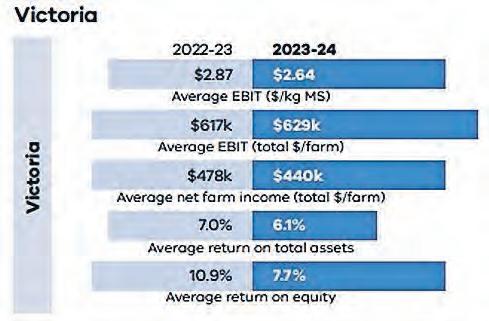
The 80 project participants represented a distribution of farm size, feeding systems and herd sizes.
There were about 2768 dairy farm businesses in Victoria that produced 5.3 billion litres or 63 per cent of Australia’s national milk production in 2023-24.










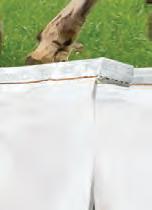




BY JEANETTE SEVERS
RAELENE HANRATTY is a dairy farmer at Upper Maffra West, in central Gippsland, Victoria.
Raelene is also allergic to dairy cows, because of an auto-immune disease.
Apart from seriously limiting her activities on the farm, Raelene needs to keep her home closed, so dust can’t enter through windows or doors and carry the irritant into the air.
It also means her husband, their children and farm workers have to discard their farm clothing and wash before they enter the main areas of the house.
More than 20 years ago, Raelene began farming alongside her husband Dennis and they have raised seven children on the dairy farm. Initially all was well.
But a visit to the obstetrician about 20 years ago during one of her pregnancies revealed her system was immunocompromised.
“I started getting an itch on my hands when I was milking in the dairy,” Raelene said.
“I was itching every time I milked, then I started sneezing too.”
She mentioned it to the obstetrician, who initially thought it was a short-term situation, until Raelene started suffering respiratory distress in the throat.
She would double glove and use a mask that covered her face when she milked cows, then shower straight after milking.
But the situation got worse and Raelene

stopped milking altogether five years ago. Now, if she is outside, she has to be upwind of the cows.
If she wants the doors and windows open, it has to be on a day with a north wind, because of the farm’s orientation.
Dennis and their son Jacob, who still works on the farm and lives at home, have to leave their clothes in the laundry and shower before they come into the house.
“They have to do their own laundry,” Raelene laughs.


“I can’t launder clothes used in the dairy shed or on the dairy farm.”
So Raelene took on the role of business and financial manager for the farm business.
She also focused on community involvement, and her roles have included chair of the board of management of the local hospital, deputy chair of Southern Rural Water’s Macalister customer consultative committee and executive roles at her tennis club and the local football club.
Raelene is deputy chair of Gippsland’s Regional Development Victoria chapter and of the Rural Financial Counselling Service Gippsland. She is also involved with Lifeline, as a mentor through the affiliated Farmers’ Friend program.
“I’ve been able to follow my off-farm passions, which are farmers’ wellbeing and succession planning,” Raelene said.
More recently, she has also discovered her immunocompromised system has now made her lactose intolerant.

•



•Gentle on the environment, crops and non-target organisms
•Nil withholding period for grazing and harvest
•Certified input for organic production

– Luke Padman


“We don’t have to stress about it, we know that every morning, every afternoon, every evening, cows are getting milked.”



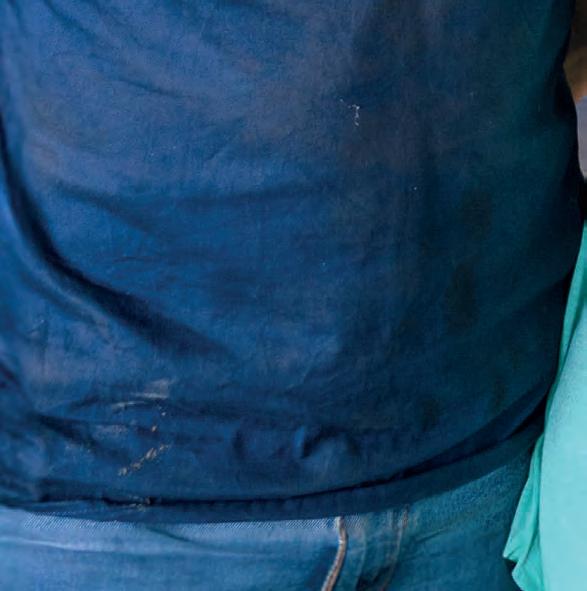





Going robotics could be easier than you think
The main reason Luke and Rodney Padman retrofit milking robots was for the labour benefits, however the two quickly discovered that Lely milking robots are so much more than just reliable staff. Rodney exclaimed “We didn’t realise the benefits we would get from these robots. We were just thinking no more phone calls at 4 o’clock in the morning about labour not turning up, but we didn’t realise the benefits that come with robots. For example: now each cow is individually fed to their needs.”


Scan the QR-code and learn how the Padmanfamily saved on labour costs and how they can now spend more time with their family.
Bright farming is yours by choice Scan me


BY JEANETTE SEVERS
A SERIES of four on-farm open days has been organised in Gippsland’s Macalister Irrigation District to demonstrate irrigation efficiencies.
The two-year Sustainable Irrigation Program Demonstration Trials are aimed at showcasing the benefits of irrigation technology using reallife examples being used on farms.
The program has been rolled out across Victoria in a partnership between Dairy Australia, Agriculture Victoria and regional Catchment Management Authorities.
The four irrigation farms in the MID demonstrate different techniques of effluent management, fertigation, water use efficiency and energy emission reduction.
One of the open days was held on September 7, on the Tinamba dairy farm of Tom and Melanie Gannon.
Tom and Melanie installed a self-cleaning filter to prevent disruptive and time-consuming blockages when applying effluent through their three pivot irrigators.
The filter system was developed and installed by a local manufacturing business.
Tom said he saw a similar system in the United States. After adapting it to his farm operation, the investment rapidly paid for itself.
Agriculture Department senior irrigation extension officer Alexis Killoran said the Sustainable Irrigation Program was directed at implementing land and water management plans on farms to improve environmental impacts of irrigation.
Applications are open for the next round of funding grants.
Videos of the Gippsland demonstration trials are available to view on the West Gippsland Catchment Management Authority website.



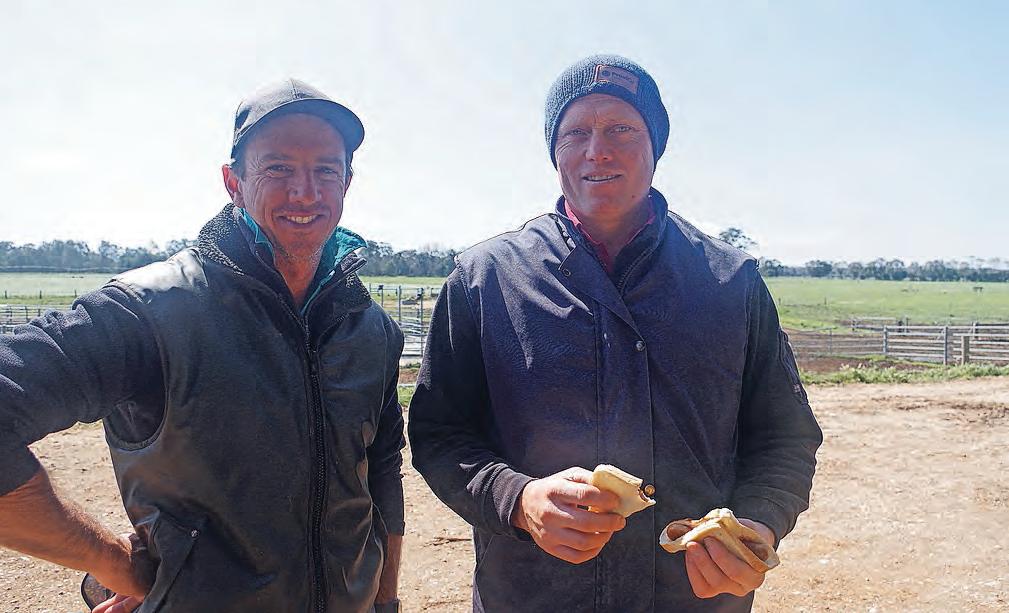



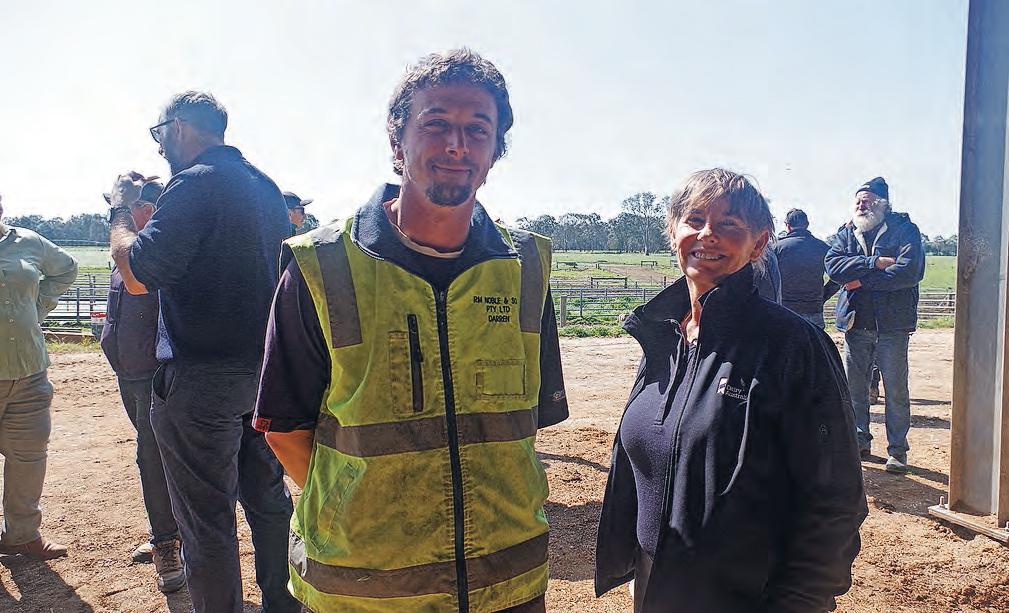













WESTVIC DAIRY has announced Pirron Yallock dairy farmer Ulke de Kleine and service provider Bruce Officer as its new board directors.
Mr Offiver has been appointed to the position after a year as an associate director.
They will replace Jacqui Suares, who will be retiring after eight years on the board, and Mike Huth, who is resigning after six years of representation.
WestVic Dairy chair Brendan Rea said he was thankful for the contributions of the resigning directors.
“I would like to sincerely thank my fellow directors, Jacqui and Mike, whose valuable insights over many years on the WestVic Dairy board have ensured the organisation’s governance and strategic direction reflect the needs of farmers in the region,” he said.
“Their diligence in their work and dedication to get the best for dairy farmers in Western Victoria is truly admirable.”

Mr Rea welcomed the knowledge and experience Mr Officer and Mr de Kleine would bring in their new roles.
“The expertise Bruce and Ulke have will strengthen the board’s ability to be responsive to industry challenges and provide the support and resources that farmers need,” Mr Rea said.
“The board has been fortunate to have Bruce’s contributions as an associate director this past year and are very pleased in his appointment as a specialist director.
“We also welcome the experience and passion Ulke de Kleine will bring to the board.”
Mr de Kleine moved from the Netherlands to Australia in 2010 for the opportunities the dairy industry here provided.
He said he wanted to see the dairy industry and dairy farmers succeed for many years to come.
“I think there is going to be great opportunities in the Western District. This year is a little different, but because of the rainfall, there will always be dairy farming here,” he said.
Board
Brendan Rea, chair
Will McDonald, vice-chair
Ella Credlin, treasurer (appointed at AGM)
Ulke de Kleine, farmer director
Rhonda Henry, specialist director (retired as treasurer at AGM)
Brooke Lane, farmer director, Lucy Collins, farmer director
Bruce O cer, specialist director
Retiring
Jacqui Suares
Mike Huth
“No-one does dairy farming the same. None of them are wrong or right. I would like to bring my positivity and perspectives to the WestVic Dairy board and Western District dairy industry.”




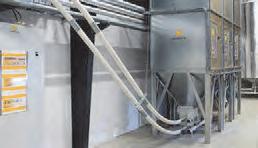


BY GEOFF ADAMS



A retired senior public servant who grew up in Queensland has been appointed chair elect of the Victorian Gardiner Foundation.
The foundation was established in 2000 with $62 million in investment funds following the deregulation of the dairy industry. The funds are used to benefit the dairy industry and dairy communities.
Andrew Metcalfe joined the board as a director at the annual general meeting in October and will formally assume the chair position at the 2025 annual meeting.
“The Victorian dairy industry has a bright future and the Gardiner Foundation has a very positive role to play in assisting that,”
Mr Metcalfe said.
“I believe my background, experience and enthusiasm will contribute to the foundation’s success and the advancement of the Victorian dairy industry.
“I look forward to working closely with the board, CEO, staff, partners and the broader industry to further the foundation’s work.”
Current Gardiner chair, Dr Len Stephens, will retire in October 2025 after five years as chair and six years as an independent director.
Under Gardiner’s constitution, the chair is appointed by its members, which include a farmer representative (United
Dairy Farmers of Victoria), a manufacturer representative (Australian Dairy Industry Council) and a processor representative (Australian Dairy Products Federation). The chair is elected as an independent director through unanimous resolution of the members after consultation with the board.
Mr Metcalfe is the national president of the Institute of Public Administration Australia. In 2023, he retired as secretary of the Department of Agriculture, Fisheries and Forestry, and as Australia’s director of biosecurity.
Mr Metcalfe was a Commonwealth departmental secretary for 12 years, heading three departments. He was appointed or reappointed as a secretary by five different prime ministers and directly worked with 15 portfolio ministers.
Mr Metcalfe was born and grew up in Toowoomba, Queensland, and studied at the Toowoomba Grammar School and the University of Queensland. He has also undertaken business administration studies at INSEAD in Fontainebleau, France. He joined the Australian Public Service as an administrative trainee in 1980 and held numerous senior roles in the immigration and Prime Minister and Cabinet departments and as being the chief of staff to a cabinet minister.
BY JEANETTE SEVERS
JAMES PATTERSON was working in the hot summer sun when his partner Lauren McConnell texted him a photo of herself sitting in shade, beside a pool.
It was enough for James to give up his job as a builder and begin to learn about dairy farming.
“It was 38 degrees and I was putting black tin cladding on a house,” James said.
“When Lauren sent me that photo, it was enough for me to rethink my life goals.”
Lauren was already working for her parents, Ray and Maxine McConnell, and was responsible for joining decisions in the herd, herd health and raising calves.
“Conversations had floated around for a while about whether I wanted to join her on the farm,” James said.
He did just that in 2022, and now he and Lauren manage one of her parents’ farms.
“One of the best things we’ve done is go through the Our Farm Our Plan learning program,” James said.
It has enabled them to identify what they want to do, what knowledge they had and
needed to learn, and how to build up equity for their future plans.
“We started with 13 heifer calves, from using sexed semen in the Aussie Red cows in Ray and Maxine’s milking herd,”
James said.
“We now have 20 milkers and 30 young heifers growing out.”
Since 2022, James has also been working alongside Ray learning about dairy farming.
“Working with Lauren’s dad, I’m learning heaps,” James said.
He has been learning about irrigation, pasture management and tractor work.
“Lauren and I are currently considering our options,” James said.
“Potentially we can begin sharefarming one of Ray and Maxine’s farms next year.
“We want to build up enough equity to be able to buy one of their farms.”
James attended a recent cow hoof trimming workshop, one of a series held in Gippsland, to learn another skill for his farming career.
James Patterson has changed careers from building houses to dairy farming.

Photo: Jeanette Severs





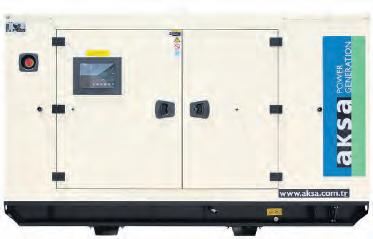














KEN AND Jill Lawrence may have found the solution to a health problem that has bugged their northern Tasmanian farm for years.
Like many dairy farmers, the Lawrences have had to deal with regular rotavirus infections in their calves, a problem exacerbated by using the same calving paddocks year after year.
But a new clear-roof, deep-litter Dairy Shelters Australia shelter purpose-built as a calf-raising facility has contributed to a significant improvement in the effects of the virus.
The shelter has been so successful that the Lawrences want to add more next year to give their Jersey cows a warmer and drier place to calve.
Ken, a third-generation farmer on their Westbury property, said the ultimate aim of the first shelter built in 2023 was to combat the rotavirus and reduce calf sickness.
“The cows have been calving in the same paddocks for many years and you get a build-up of bugs, so we wanted to change that,” he said.
“We have a fairly high stocking rate, especially for the calving paddocks, and if it’s a wet calving season, the paddocks just turn to mud.”
The virus usually kicks in three weeks into calving but this year it remained absent until after a storm in September.
“We’ve had to deal with rotavirus over the past few years, but because it’s warmer in the shelter they don’t get secondary conditions or pneumonia and they are in a confined area so it’s easier to give them electrolytes,” Jill said.
“We are very particular about raising calves and they have grown bigger as they don’t have to keep themselves warm. They coped a lot better than if they had been out in the elements with the smaller shelters we previously used.”
There has been a seven per cent weight increase in 14-month-old yearling heifers raised in the shelters compared to the previous year.
The Fermer farm has been in the Lawrence family since 1936, always with a Jersey herd. Ken and Jill are joined on the farm by three of their five children.

The farm is on the edge of the high rainfall area, usually getting about 80cm a year. There are 210 hectares under irrigation with three centre pivots, covering nearly half of the 487-hectare farm that is supported by two runoff blocks for dry cows and for providing feed.
They milk between 850 and 900 cows that produce an average 6000 litres with high components, 5.3 per cent fat and 3.9 protein.
The relatively high stocking rate and constant re-use of the calving paddocks prompted a look at options for a shed.
They originally planned an enclosed shed with automated calf feeding equipment, but their son Henry went on a tour of Victoria and saw the Dairy Shelters Australia shelters.
“We met the Dairy Shelters Australia guys at AgFest and because we’re only half an hour away, they ducked out to look at the site and suggested we have a look at some of their shelters in Victoria,” Ken said.
“The following week we did a whirlwind two-day tour of Victoria. We also saw a shed with automatic calf feeders that we’re interested in. The calves were doing well and the
feeders were great, but it was so cold and damp inside.
“On the same day, we looked at one of the Dairy Shelters Australia tunnels and it was completely different. It was dry, warm, sunny and with a lot of airflow. They sold themselves.”
Jill said they were impressed with how light they were and the relaxed environment they created.
“The calves seem happy and calm,” she said.
While the shelters can be used for multiple purposes, the Lawrences wanted one as a calf-rearing facility.
“We’ve used a shed for about 15 years but we’d outgrown it,” Ken said.
“We were using an old barn and rotating through the pens too often, increasing the risk of sickness. We rear about 400 calves every year and wanted another facility where we could house all our keeper calves.”
Calving happens over a hectic AugustSeptember, so after the May tour to Victoria, they placed an order for a shelter and construction started in June.
“We pulled the trigger on a site close to the
dairy and started preparation,” Jill said.
The rush was also prompted by plans by Tas Networks for new transmission towers crossing their land.
“The transmission lines are right over the calf-rearing paddocks, but we didn’t know when the upgrade would take place,” Ken said.
“If that happens and they’re building towers twice the size we’ve currently got while we’re trying to rear calves, that’s going to be a bit of mayhem.
“We decided we had to do something. It is recommended to put them up in warmer weather but we did it in the middle of winter because we couldn’t wait. They did a fantastic job getting it up in time.”
Each tunnel is divided into six individual pens for up to 36 calves and the middle tunnel is kept free as a service lane to allow for easy movement.
Now Ken and Jill want calving shelters.
“If we calve them in the shelters and then raise them in shelters, that should eliminate the rotavirus infection from the paddocks,” Ken said.
“That will complete the picture.”
They hope to have the next structures ready by April 2025, with four connected shelters to allow eight square metres per cow with about 200 to calve at the same time in the split herd. It will also create opportunities to bring a herd under cover during storms on the low-lying farm that is prone to paddock damage.
“Having a calving pad in a clear-roof shed is better for the cow, the calf and the farmer,” Jill said.
Ken and Jill believe other farmers should look at the shelter option.
“We highly recommend it,” Ken said.
“Two vets and a dairy farmer are running Dairy Shelters Australia, so that’s a great endorsement for the system and we’ve seen the results for ourselves.
“It’s an appreciable investment with the site prep, the build and the fit-out, but it’s definitely worthwhile.”



What if you could proactively improve calf and cow health sothey can better withstandchallenges, including those caused by mycotoxins?
What if you could control calf diarrhea before an outbreak, and reduce the incidence, severity and duration of other common diseases that affectthe feedconversion efficiency of lactating cows and your bottom line?

What if you could add nutritional insurance to every stage of your cattle’s lives resulting in healthier heifer calves that join the milkingherd ready to contribute at a high level, and lactating cows that spend less time off feed.
Has been shown to:
•Agglutinates and binds E. coli and Salmonella enterica.
• Agglutinate and bind E. coli and Salmonella enterica
•Reduces the incidence, severity and duration of mastitis and cryptosporidiosis infection.
• Reduce the incidence, severity and duration of mastitis and cryptosporidiosis infection
• Reduce blood stress markers during and after transport and temperature stress.
•Reduces blood stress markers during and after transport and temperature stress.
• Minimise cytotoxic damage caused by a variety of mycotoxins and carryover of aflatoxins in milk
• Improve weight gains and performance in calves and milk yields in lactating cows
•Minimises cytotoxic damage caused by a variety of mycotoxins and carryover of aflatoxins in milk.
•Improves weight gains and performance in calves and milk yields in lactating cows.

Distributed By:
BY JEANETTE SEVERS
THE RECENT annual general meeting of GippsDairy saw changes in the board of management, discussion about financial accountability and encouraging young dairy farmers into governance roles and the announcement of an urgently-needed Q fever vaccination program.
The Macalister Irrigation District in Gippsland is ground zero for high incidences of Q fever, in comparison to other dairy regions.
In 2023, Gippsland comprised 36.3 per cent of all diagnosed Q fever cases in Victoria, but accounted for only four per cent of the state’s population.
At this year’s Dairy Muster, the board of GippsDairy announced it was lobbying for a government-supported Q fever vaccination program in Gippsland.
GippsDairy board chair Sarah O’Brien said financial support had been committed and vaccination dates were in the process of being confirmed with local medical clinics.
Vaccination dates will be publicised through GippsDairy’s online and direct communications with dairy farmers.
At its annual general meeting on October 16, the board of GippsDairy was confirmed with a mix of continuing, returned and new directors.
Continuing farmer directors are Mick Hughes (Inverloch), Sarah O’Brien (Dennison), Aaron Thomas (Won Wron) and Lisa Broad (Wonthaggi). Continuing specialist director is Tony Platt, representing Rabobank.
Returning farm director is Ken Lawrence, whose dairy farm is at Jindivick, and returning specialist directors are Burra Foods milk supply manager Peter Fort and West Gippsland Catchment Management Authority chief executive officer Martin Fuller.

Stratford’s Jessica Knight had completed her three-year term as a farmer director and was farewelled with appreciation for her contribution. Upper Maffra West dairy farmer Raelene Hanratty was elected into this vacant position.
Sarah was re-elected chair of the board, Ken was re-elected deputy chair and Mick was re-elected secretary and public officer.
The board endorsed a recommendation for an associate member status, with non-voting rights.
“We want to attract young dairy farmers into representative and governance roles, and we’ve decided this is one way we can do that,”
Sarah said.
“They will be mentored and able to learn governance skills that they can take into other roles.”
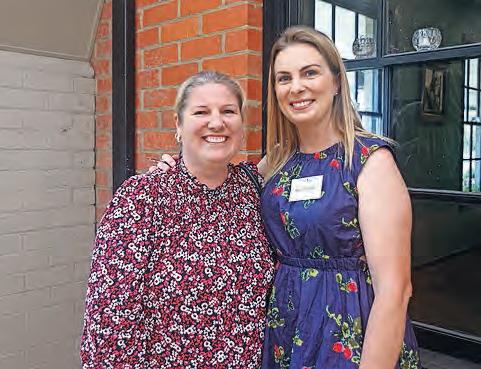

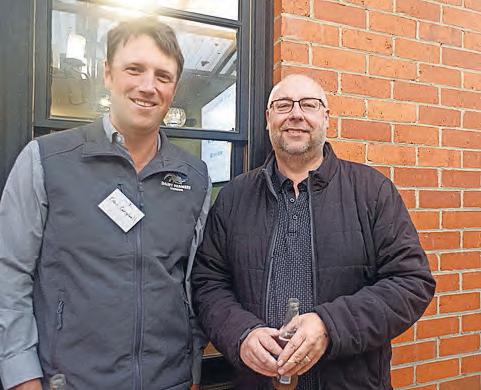

It is also part of succession planning for the board.
“As a board director of GippsDairy, they will also be paid for the time they contribute,” Sarah said.
“We want them to feel valued.”
GippsDairy will open an expression of interest process to facilitate appointment.
Sarah also acknowledged the strictures of a tightening budget on the delivery of extension and support services by GippsDairy staff.
Base funding for the organisation from Dairy Australia is based on the number of dairy farms and milk production in Gippsland. The funding model is also affected by funding commitments to Ellinbank Research Station in West Gippsland.


“Karen McLennan (executive officer of GippsDairy) and her staff have done a stellar job of work and extension in Gippsland,” Sarah said.
“Our budget within Gippsland – and of course across all the dairy regions of Australia – has been in decline.
“It has been difficult to make choices around what we can do, what we would like to do and what we actually can do.
“So there’s been a lot of vigorous conversation around the board table this past year. That has encouraged the board to think really long and hard.
“Karen and her team have done an amazing job of securing $506,000 in grants and sponsorship, to add to our bottom line, to deliver programs and offer resources to farmers in Gippsland in this past year.
“I appreciate that our service providers recognise the vision and what we’re trying to do here in GippsDairy and put their money behind what we’re doing.
“They have joined us to do some amazing events through Gippsland.”
Sarah said the board’s expectation was that core funding would remain tight going forward.
With funding support from Latrobe Valley Authority, West Gippsland Catchment Management Authority and Gardiner Foundation, in October GippsDairy facilitated a series of strategy workshops with farmers and service providers across Gippsland and online.
“We’re developing a whole of industry strategy that’s looking at pre and post-farmgate, involving farmers, advocacy bodies, dairy industry leadership groups and service providers,” Sarah said.
In the next 12 months, GippsDairy’s program delivery will shift in focus to supporting on-farm profitability, a change that has already become apparent.


BY JEANETTE SEVERS
AS SPRING has brought warm and humid weather into Australia’s dairy regions, it raises the risk of facial eczema in cattle.
Facial eczema is the clinical indicator of a disease of the liver, which is caused by ingestion of the toxic mycotoxin sporidesmin, produced by the fungus Pithomyces Chartarum, which is found in ryegrass-dominant pastures.
The cow grazes and ingests the toxin. Hot and humid weather creates an environment for spores to multiply rapidly.
The spores affect the bile ducts in the liver and cause damage to the liver, bladder, face, ears, vulva and mammary glands.
In animals where the infection is obvious, the skin reddens, then becomes crusty and dark. Eventually the skin peels off, leaving large raw areas susceptible to infections and flystrike. Affected animals may collapse in severe pain.
Unfortunately, animals can also be affected without showing significant outward symptoms of infection.
According to research from ProDairy, up to 80 per cent of affected animals show no clinical signs of toxicity. But their milk production, general health and reproductivity diminishes.
Gippsland’s Herd Solutions vet Chelsea Hair said the current weather conditions were ideal for a rapid increase in facial eczema incidences.
“The fungus loves hot, humid weather conditions,” Dr Hair said.
“A lot of dairy farmers know they should talk to their feed nutritionist about how to supplement their cows’ feed with zinc before the onset of these sort of conditions.”
When the bile duct and liver damage occurs, cows are obviously affected with photosensitivity, sunburn that looks like scaling of the skin.
“A common indication is scaling of the unpigmented skin, like the nose and udders are affected,” Dr Hair said.
“And white cows are obviously more severely affected, because they have huge amounts of unpigmented skin.
“But it’s more the stuff you can’t see that you need to worry about, too.
“Because it affects bile ducts, you’re going to get chronic scarring of those bile ducts.”
There are also risks with feeding zinc supplements, which is why it should be in consultation with a feed nutritionist.
“You should only feed zinc for 100 days before you get toxicity effects,” Dr Hair said.
“There’s a risk from giving the cows too much zinc.
“There’s a bit of a lag from when you start putting zinc into the feed before it becomes protective.
“But it’s better to start putting it in now than not do it at all.”
Facial eczema is painful for the cow, and a significant animal welfare problem.
Skin lesions typically occur two weeks after first ingestion of the spores and lead to death, reduced weight gain and poor reproductive performance.
Being the spring calving season, you may find a downer cow in your herd. There are several potential causes of this, and the correct diagnosis and treatment could help save your cow, time and money.
Physical injuries
Calving paralysis is usually, but not always, associated with heifers and a difficult calving. During calving, a cow’s nerve, known as the obturator nerve, may be crushed between her pelvis and the calf.
A cow with calving paralysis will appear bright and alert but have no control over one or both hind legs. The only treatment is time and careful nursing. Antiinflammatory drugs are useful if used early.
Calving paralysis needs to be distinguished from injuries such as dislocated hips and back injuries. Such injuries can occur in any aged animal often after an accident such as slipping.
A cow with these injuries will also be bright and alert and usually eat and drink normally. A veterinarian should be called to assess these animals.
Metabolic diseases can be distinguished from physical injuries by the presence of other clinical signs. Milk fever is seen in older, high producing, fatter cows. A cow with milk fever will show fine muscle tremors, staggering and weakness.
Grass tetany is seen during times of stress such as bad weather on short grass-dominated pastures. An affected cow will become aggressive, excited, go down and paddle and convulse violently. Both milk fever and grass tetany should be treated urgently with 4 in 1.

Nutritionists with Reids Stockfeeds have noted outbreaks of facial eczema in all dairy regions of Victoria and coastal areas of Australia.
Pregnancy toxaemia or acetonemia is an energy deficiency problem seen in cows losing weight or calving in poor condition. Behavioural signs will be seen before the cow goes down. Cases may indicate a dietary deficiency being experienced by the whole herd.
Toxaemia (blood poisoning)
Mastitis, metritis or any other generalised infection causes toxaemia, or blood poisoning. A cow with toxaemia will appear depressed, with a dry nose and sunken eyes.
It is important to check the udders of downer cows for mastitis and the uterus for tears or severe infections.
Care of the downer cow
Prompt treatment with appropriate veterinary drugs and good care are key to successfully treating a downer cow. The first step is to determine why the cow is down and to treat appropriately. Cows should only be nursed if they have a realistic chance of recovery. Otherwise, they should be humanely destroyed.
When nursing a downer cow, move her to dry sheltered shed and provide her with comfortable, dry, soft bedding on a nonslip surface. Sit her on her chest, position her correctly, and roll her from side to side at least two times a day. Provide her feed and water.
Use hip clamps only for a few minutes to get her on her feet. For further advice, please contact your local veterinarian or Agriculture Victoria veterinary or animal health officer, or in NSW your Local Land Services. Dr Je Cave is a senior veterinary o cer at Agriculture Victoria.
Dairy farmers are recommended to avoid, if possible, close grazing of pasture, avoid putting cows into paddocks that have been cut for hay or late-topped, consider growing summer crops and alternate grazing between native and improved pastures if feasible.
Pasture spore counts can be proactively monitored, allowing for early intervention. There is more information about facial eczema on the Dairy Australia website.


ProDairy can assist you with the development of a tailored plan:
• On-farm visit by a ProDairy veterinarian.
• Review of the current biosecurity principles, the major risks and actions taken to reduce those risks.
• Development of a customised biosecurity plan.
Visit prodairy.com.au for more information.


Judith Bysouth brought the only known header simulator to the show from Natimuk in the Wimmera. The game proved popular for some competitive would-be grain farmers. “It’s for bridging the gap between city and country, and we’ve had some kids from Melbourne who have thought it was wonderful,” Ms Bysouth said. The simulator also travelled to the Boort Show on October 12 and Charlton Show on October 19.

BY ANDY WILSON AND EMILY DONOHOE
AFTER TWO years of heavy spring rain, the Elmore Field Days brought weather more welcoming to the crowds who made the trip to to October 1-3 event.
Executive manager Derek Shotton said there was “quite a vibe” among the avenues and displays for the more than 30,000 confirmed visitors across the three days.
“The weather gods have finally smiled on us, so that’s a blessing,” Derek said.
“It’s very easy to get sucked into the doom and gloom these days, but the vibe
of the exhibitioners and the patrons is very upbeat.”
Derek said it had been a different crowd this year due to the alignment with school holidays.
“It’s a different demographic — which is a good thing.
“And of course we like to see our city cousins come and have a look as well as our traditional market.”
Derek praised those exhibitors at the front of technology.





“People see that the autonomous and automatic equipment is no longer an idea or something you see online any more; there’s actually demonstrations on display for the doubting Thomases.
“The tech — it’s coming, it has actually come, it’s here.”
The Elmore Field Days team was thrilled to see so many faces at the site, seeing growth from previous years.

“We had exceptional crowds,” public relations officer John Giffin said.








“We’re extremely happy.
his new job.
“Twenty-four years ago, no-one knew who we were,” he said.









“Probably the best crowds we’ve seen in five, six years. We had three COVID years, then a flood year and then a very wet year.”
The 61st edition of the event welcomed attendees of all ages speaking with stallholders about their offerings, watching demonstrations and presentations, sampling products and enjoying the food options on offer.
“You’d wander in, and they’d go, ‘Genesis who?’
“We’ve developed, made a lot of new products and expanded our business. It was me, and now we’ve got three, four wandering around.”
He credits events like Elmore Field Days for building exposure for the company’s products, as well as providing insight into what customers are looking for.





While businesses with bigger ticket items, like tractors, had more conversations than sales, smaller equipment and general interest stallholders were impressed with the reception.
“It’s made people aware of what we’ve got,” he said.



“They were probably getting more inquiries rather than sales,” John said.
“You’ve just gotta be out there and put yourself forward. You find down the track, people will come back to you.



“People are just tightening their belt at the moment because of frost-affected crops ... they’re still buying the small gear, but the bigger items are just on hold just for the moment to see how the year pans out.
“For (businesses with smaller products), it was a ripper field days.”
Seasoned pros and newbies alike were welcomed into all the agricultural action.
Among them were animal health business Genesis Industries’ Marlin Walsh and Noel Forrest, who attended for their first and 25th and final time respectively.
Sales representative for Victoria, Tasmania and south-western NSW, Noel first came to Elmore Field Days in 2000, just weeks into
“You get a feel of what the market’s up to and how the season’s going.”
Noel is ready to put down the tools and hand over the field days baton to other staff as he heads into retirement.
His biggest word of wisdom to fresh faces in the industry, working at events like Elmore Field Days, is to put yourself out there.
“I’m getting probably to the age where I should stay home a bit more,” he said.
“The best advice is: if you don’t ask, you’ll never know if they want the stuff. A lot of salespeople get frightened of asking.
“(There’s a) 50 per cent chance they’ll say yes or no. If you don’t ask, you don’t know.”
AS THE weather warms and green shoots spring in lawns around the country, John Deere’s first fully electric zero turn mower has arrived on Australian and New Zealand shores ready for summer.
With less maintenance, easier operation and reduced noise, the Z370R Electric ZTrak Residential Zero Turn Mower promises a smooth, sustainable ride that doesn’t compromise on performance.
John Deere Australia and New Zealand small ag and turf marketing manager Erin Wagstaff said the Z370R was a landmark addition to the company’s range of garden and lifestyle block equipment.
“We have a range of specialist electric walk-behind mowers for golf courses, but the Z370R is the first electric mower we’ve designed for everyday lawn fanatics — the backyard mowers who want a cost-effective, quality option that will last and is super easy to use,” Erin said.
“John Deere is committed to meeting the evolving needs of our customers. For some people, our standard petrol mowers are the preferred choice, while others have requested an electric version of our Z300 series, which we are delighted to now have available for pre-order.
“The Z370R is built on exactly the same resilient, robust frame as our other Z300 models, with the added convenience and sustainability features of electric.”
The Z370R is powered by a 3.2kWh lithium-ion battery, which, unlike most other
electric mowers on the market, is fully sealed to IP66 (ingress protection) rating, shielding it from the elements like dust, dirt and water.
“The ability to operate in wet conditions is a huge advantage, as is being able to wash it down with a hose and not worry about battery damage,” Erin said.
“Being electric, the Z370R is also quieter than its petrol equivalents, and the lack of engine vibration combined with the ergonomic design makes for a smooth, comfortable operating experience.”
The Z370R mows up to 0.8ha on a single charge, with the onboard smart charger simply plugged into a standard power outlet.
“A number of electric options already on the market require the batteries to be taken out of the mower to be charged and then popped back in,” Erin said.
“With the Z370R, you just plug it in and let the onboard smart charge technology prevent overcharging and preserve the battery life.
“There’s a lot less maintenance involved overall. You’re not having to continually fill up your fuel tank, or worry about changing oil, air filters or belts.
“Over time, this means the Z370R will likely be the more cost-effective option as well.”
Both the 42-inch and 48-inch Accel Deep TM mower deck options have a deep draw and flat top design for an exceptional quality of cut at fast ground speeds, plus industry-exclusive John Deere MulchControl technology for reduced grass clippings and a healthier lawn.
The weather-proof deck also includes a

The Z370R is built on the same frame as the other models in John Deere’s popular Z300 series, with the added convenience and sustainability features of electric.
wash-port for users to connect a hose for efficient cleaning.
Further enhancing the zero-emission mowing experience, the Z370R features a large LCD screen used for monitoring battery levels with three modes, so that operators can adjust settings based on preference and yard conditions.
“We’re excited to launch the Z370R as a zero-emission, cost-effective option to our customers,” Erin said.
The Z370R is available to pre-order, with 42-inch deck models to be delivered in time for summer, and 48-inch models early 2025.
For more information, visit your local John Deere dealer.



Designed and built to suit many of todays farming needs.


Featuring 3 x PTO driven rotors designed to integrate different fodder products together and give you a more even and consistent feeding. There versatile design is ideally suited for both feed pads and in field conditions. Performance and durability is built into every machine with our all steel construction, 13mm Titan series floor chains, high capacity 1200mm wide cross conveyors and heavy duty chassis. With sizes from 12m3 to 28m3 and a host of options to choose from, there’s a McIntosh Beater wagon to suit your individual needs.

FOR


















































PROVEN * trace mineral injection for cattle to support optimal health, production and fertility, with the added benefit of Vitamin B 12 in one convenient injection















